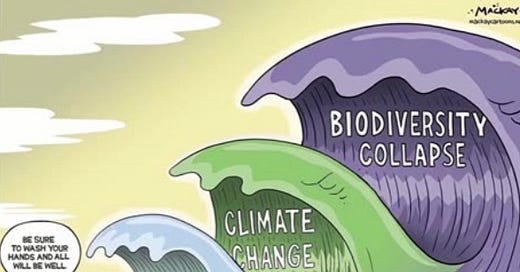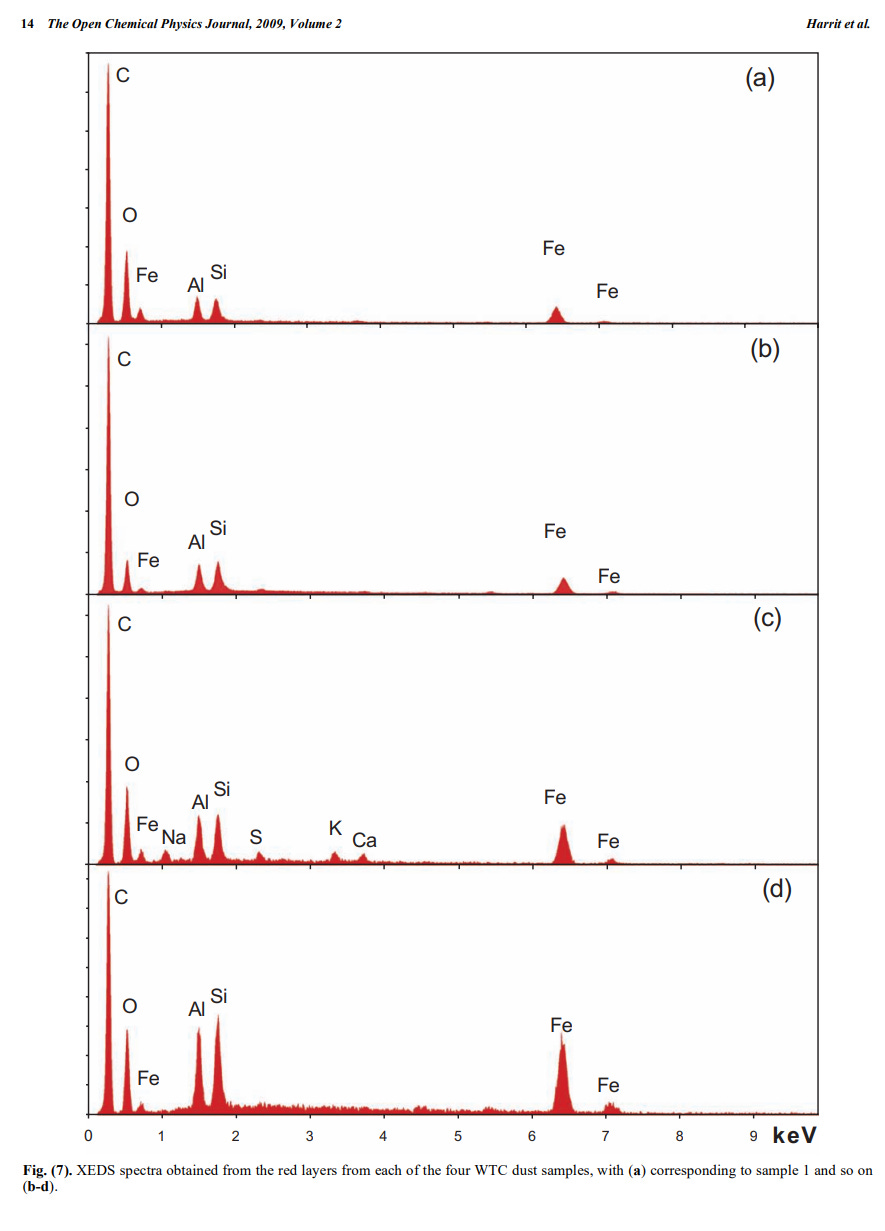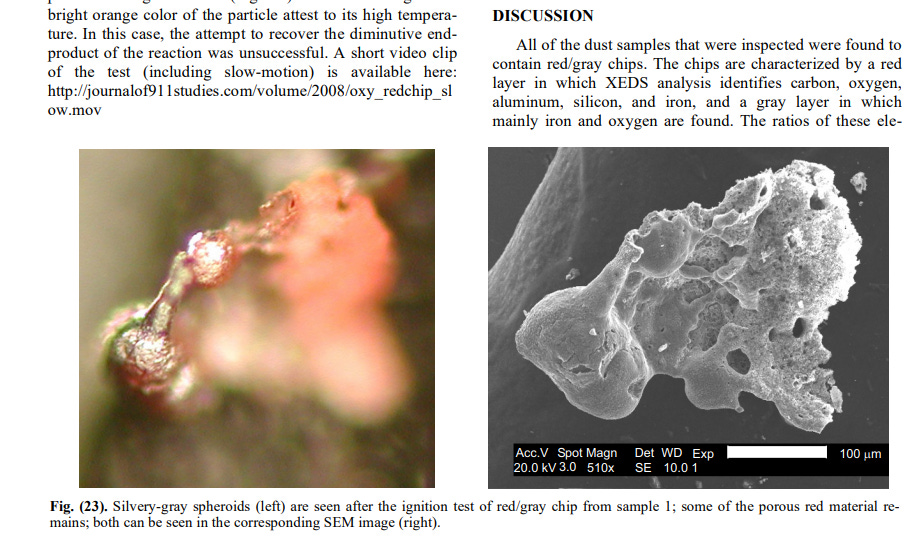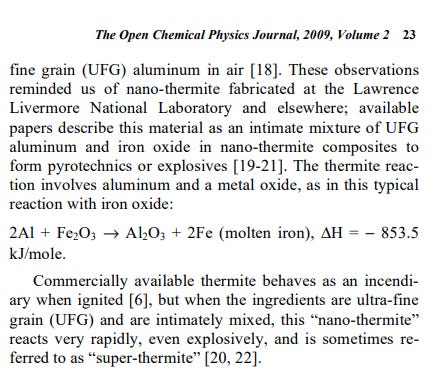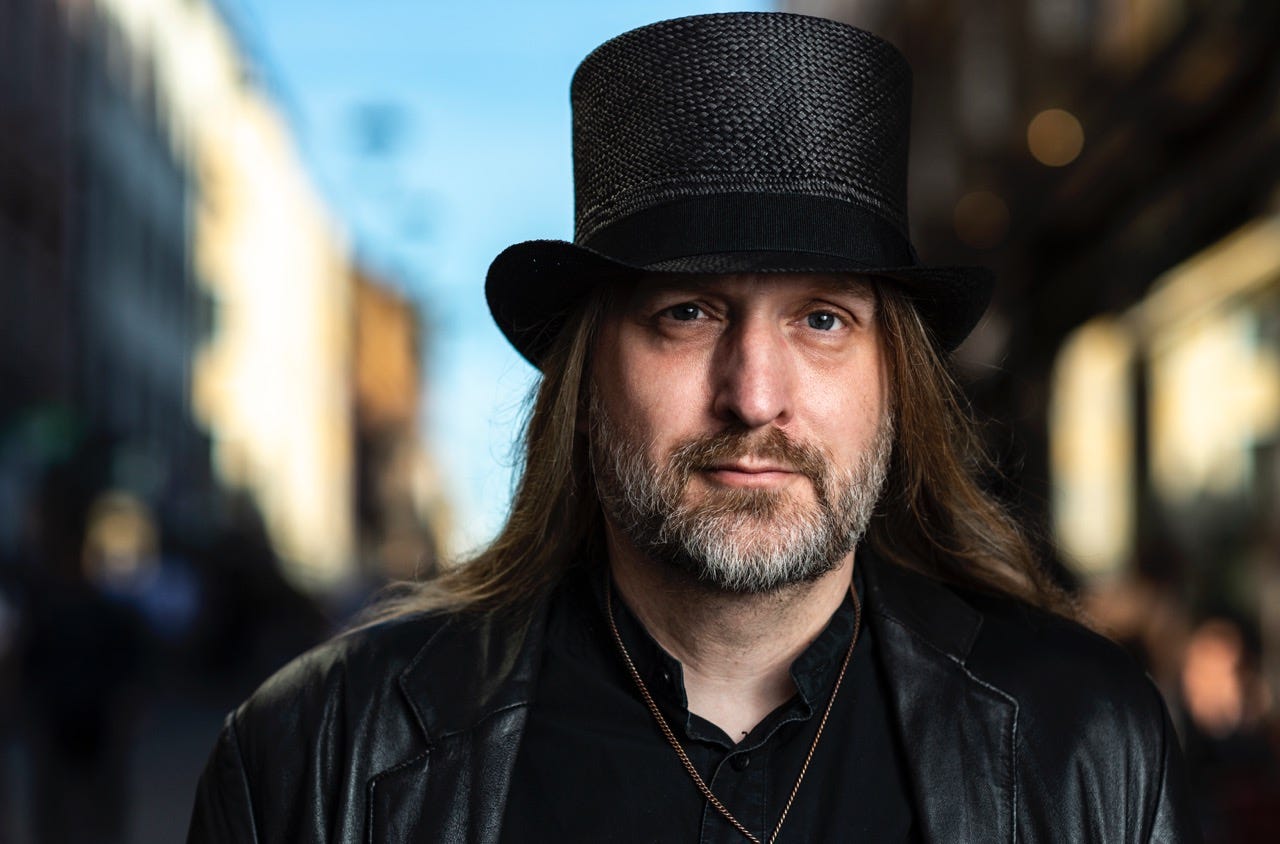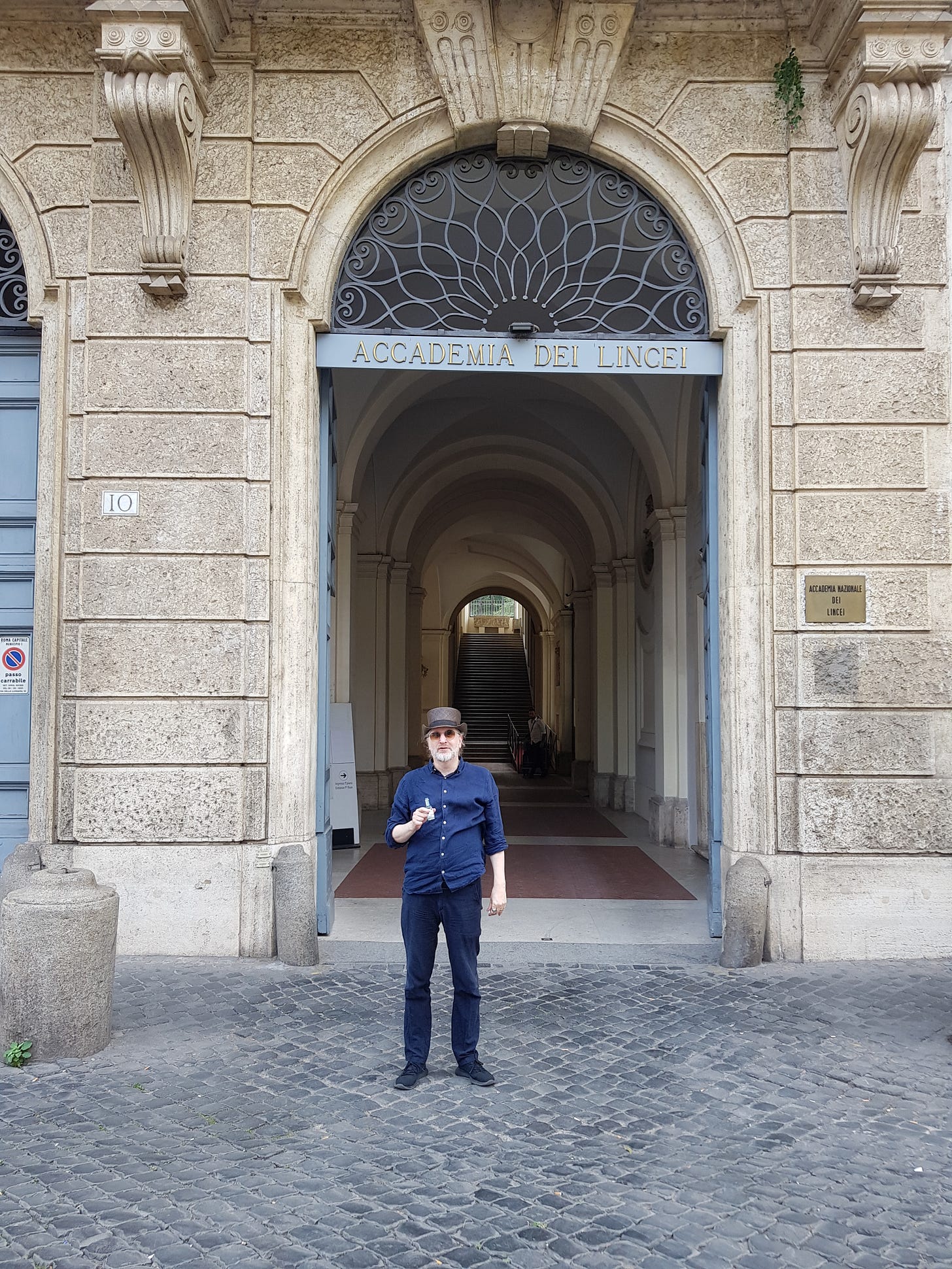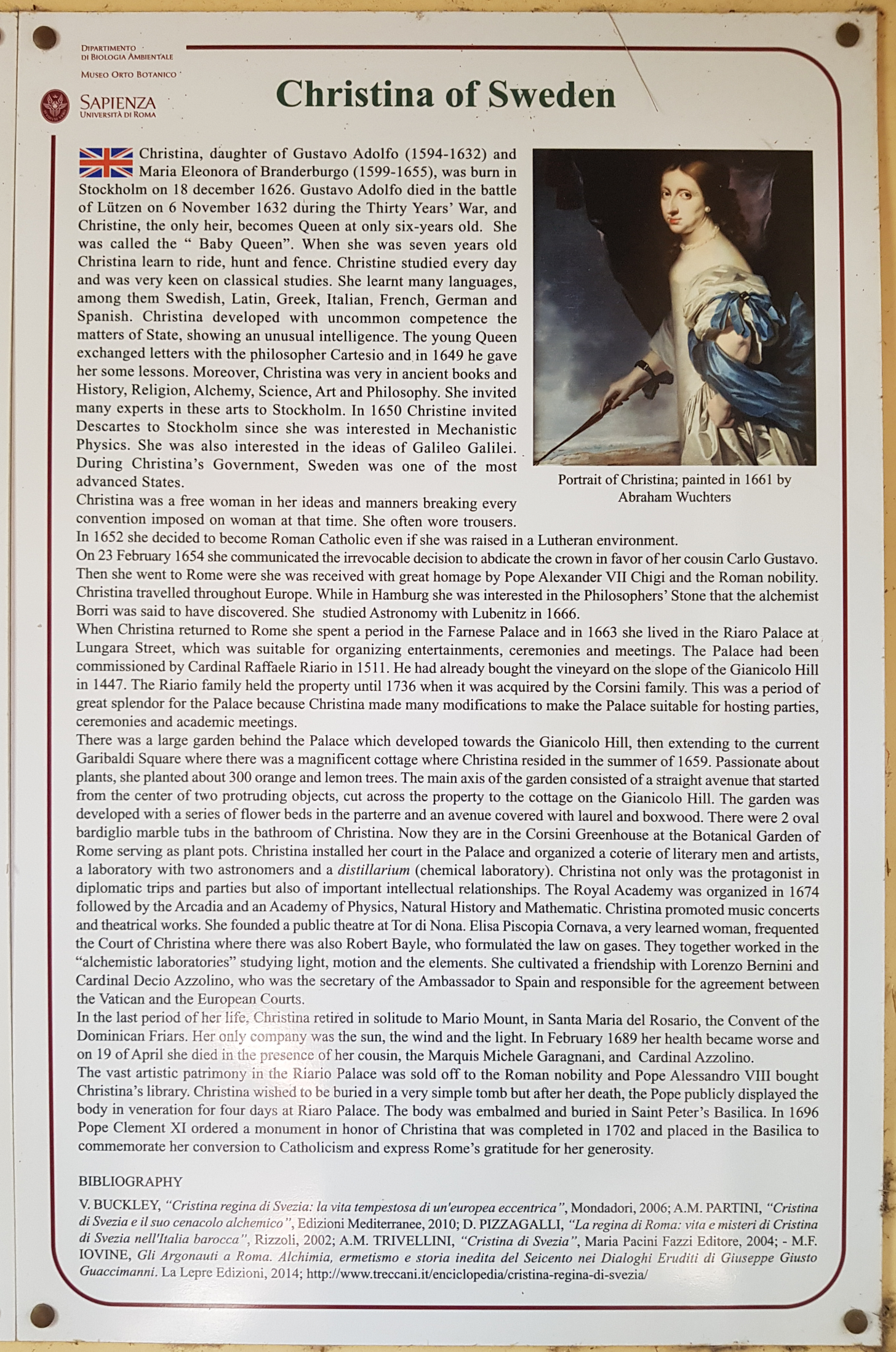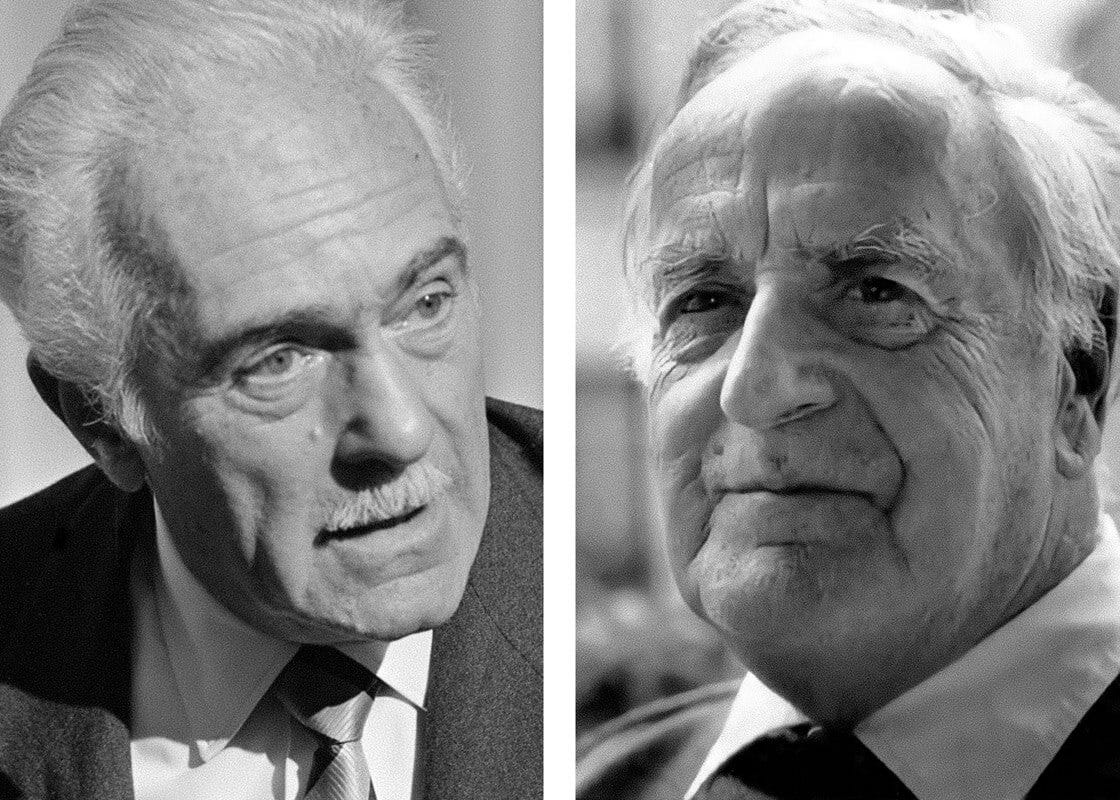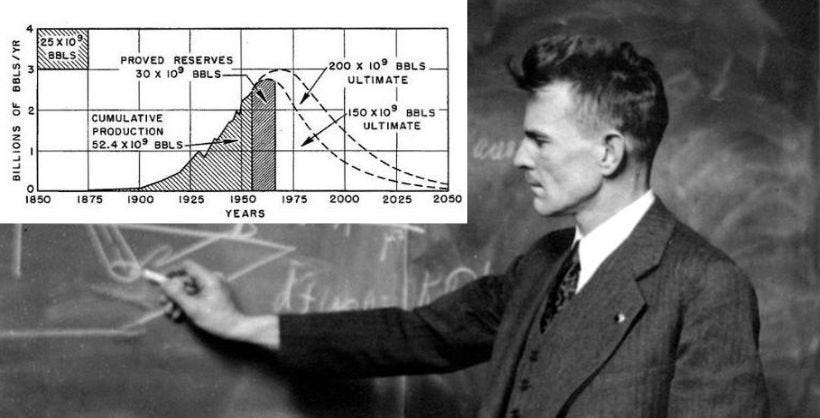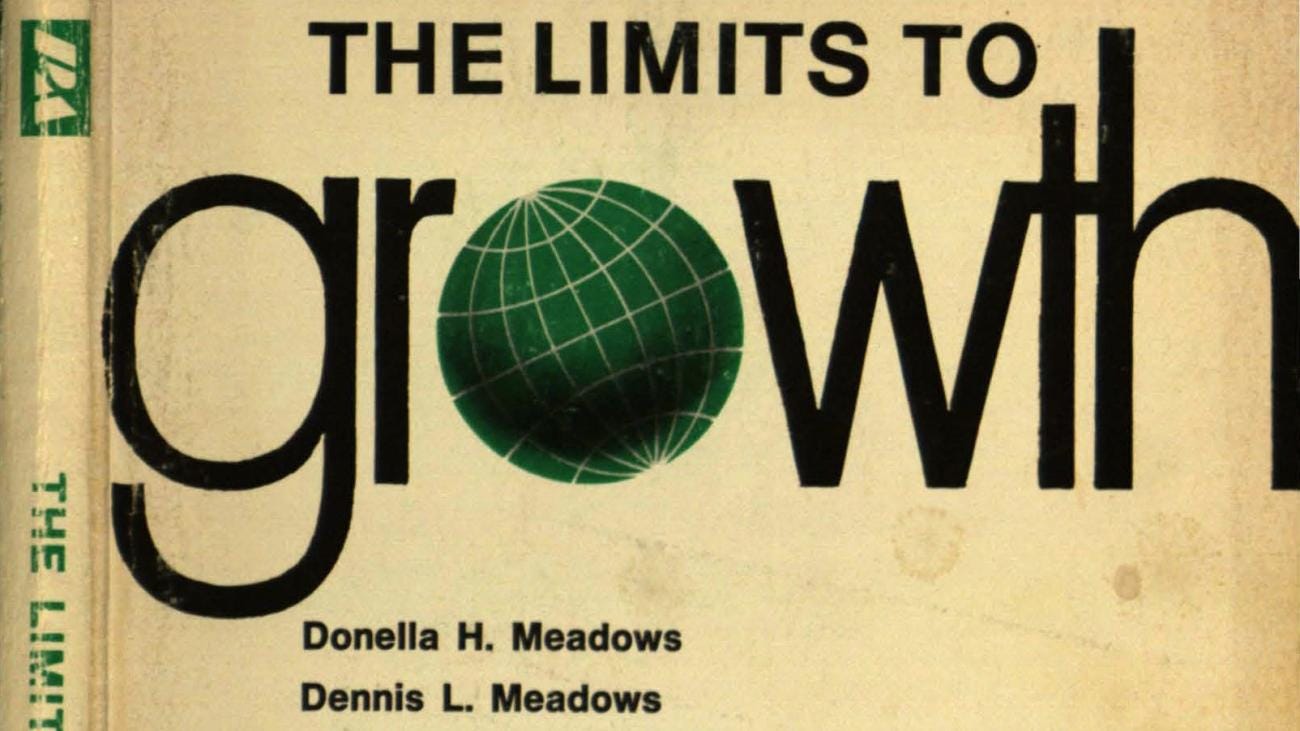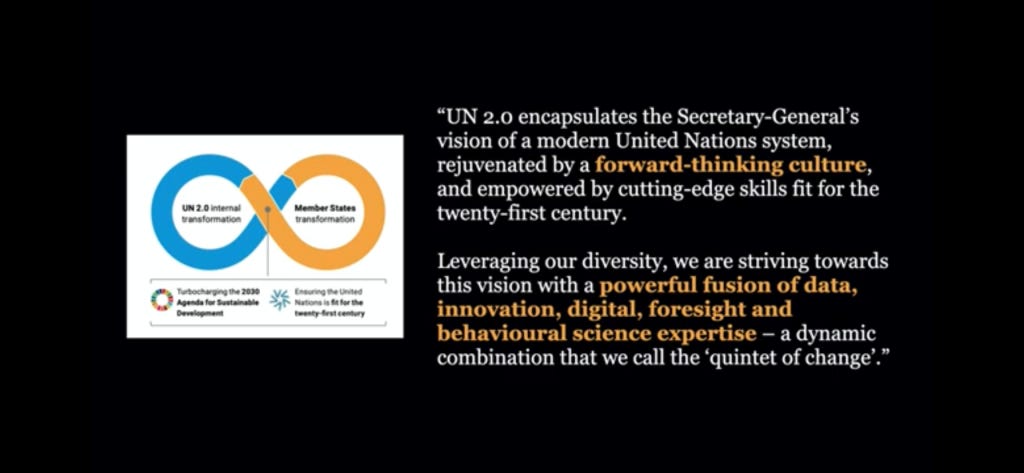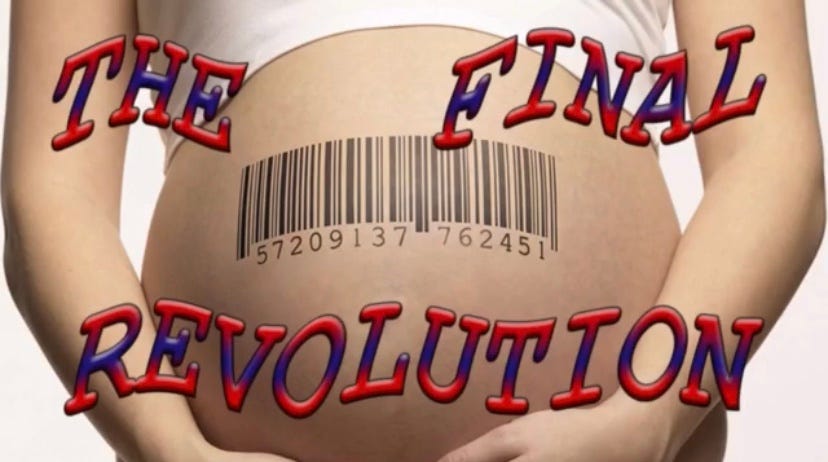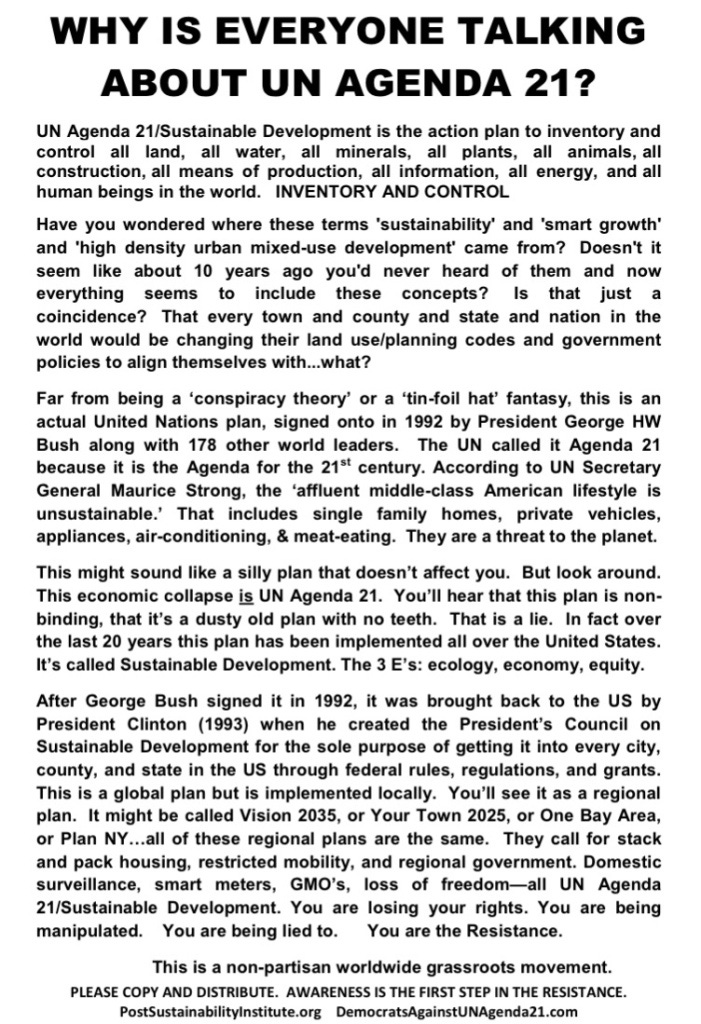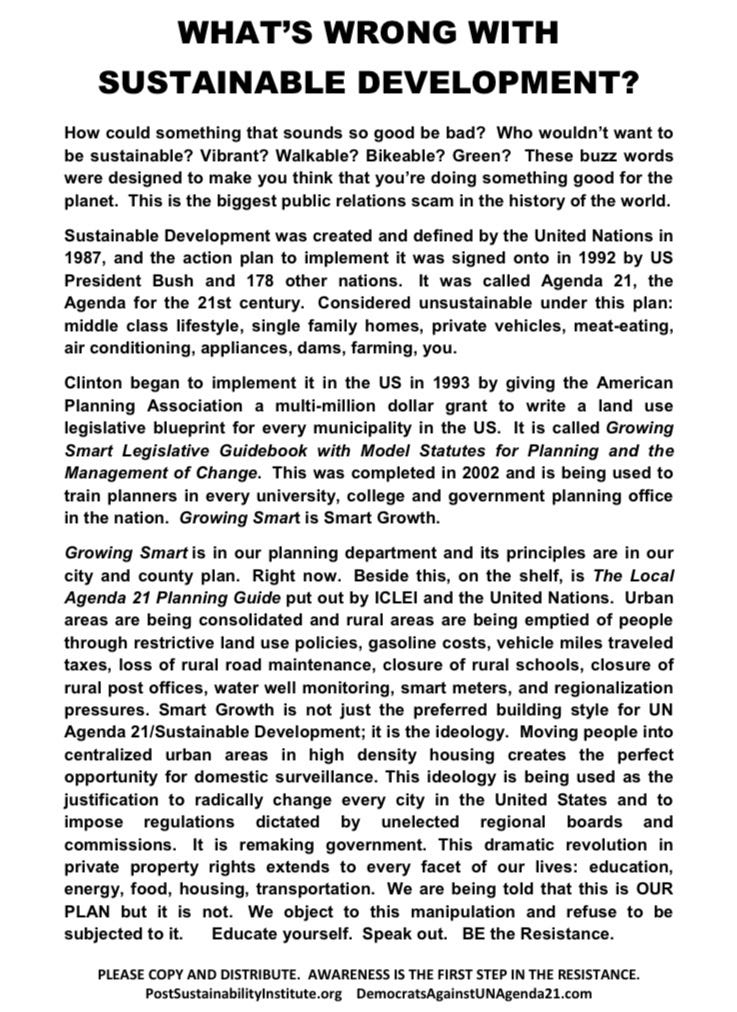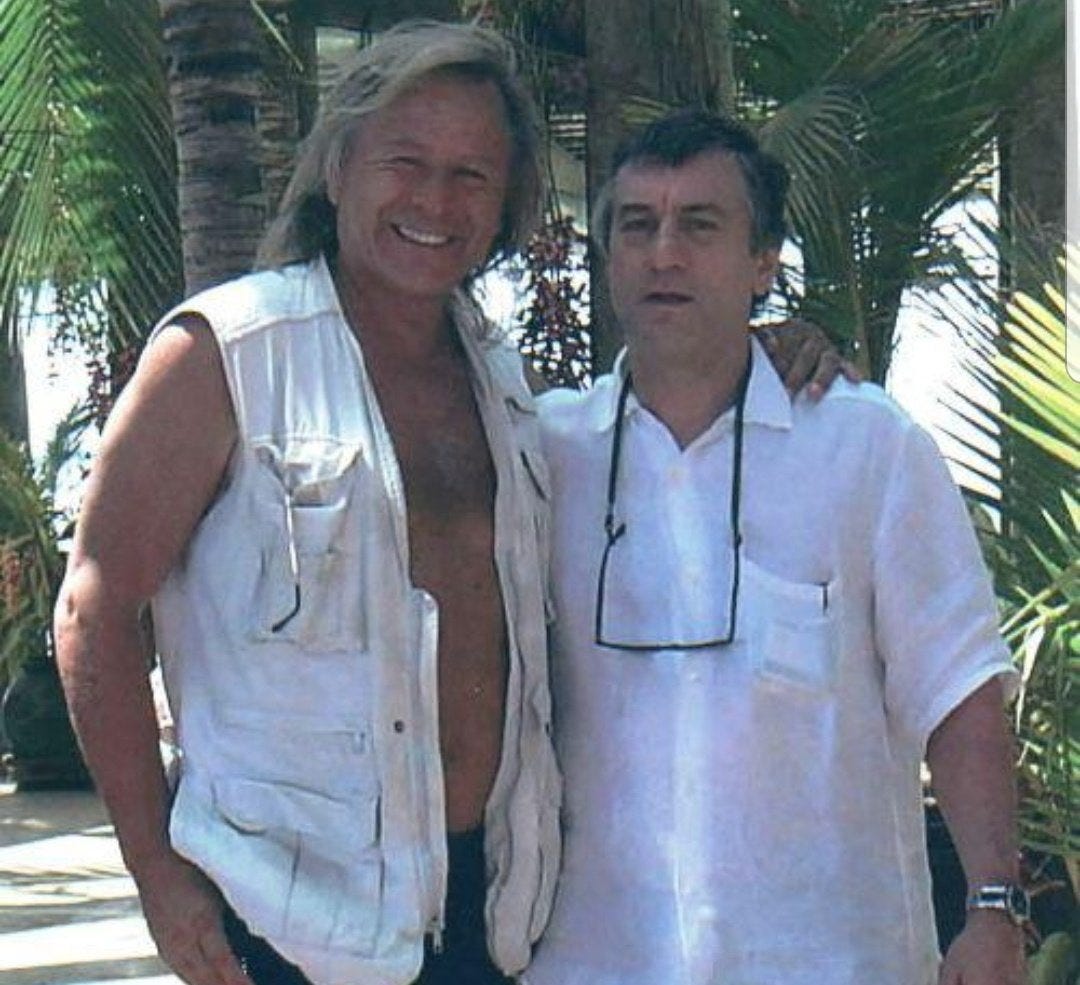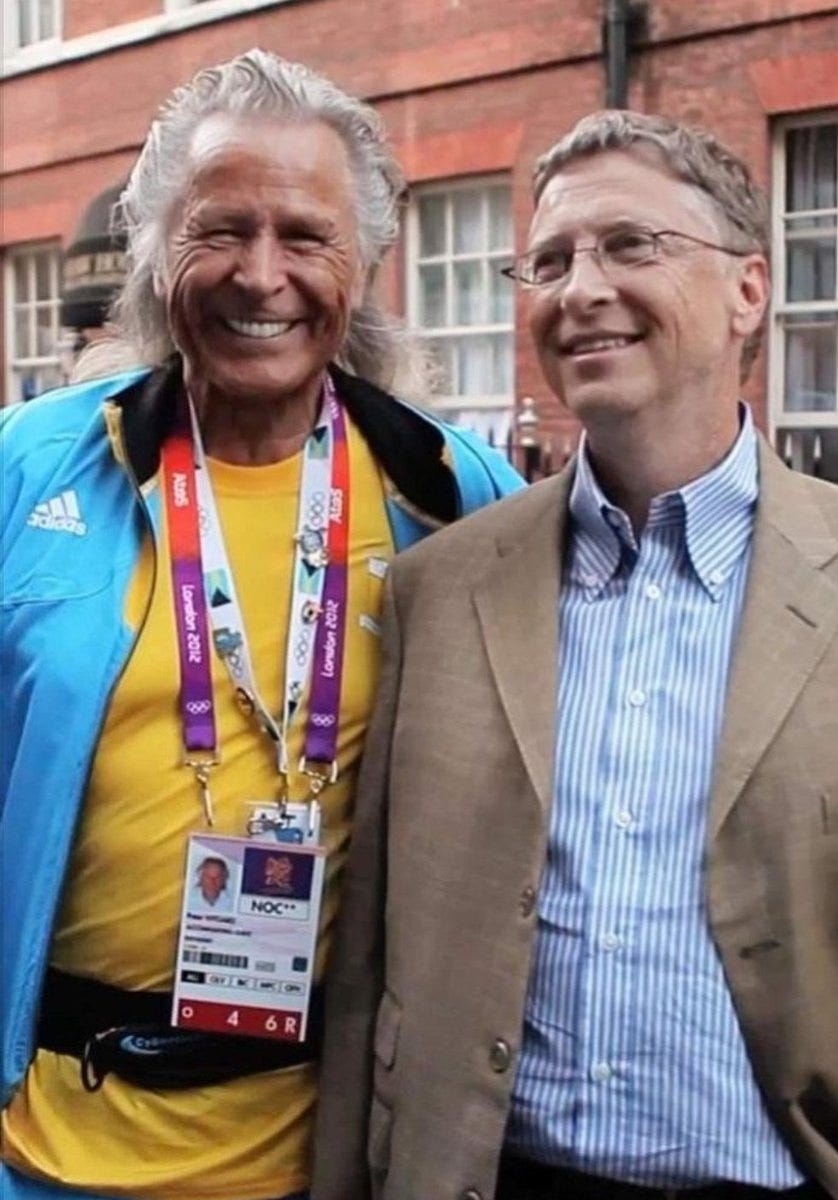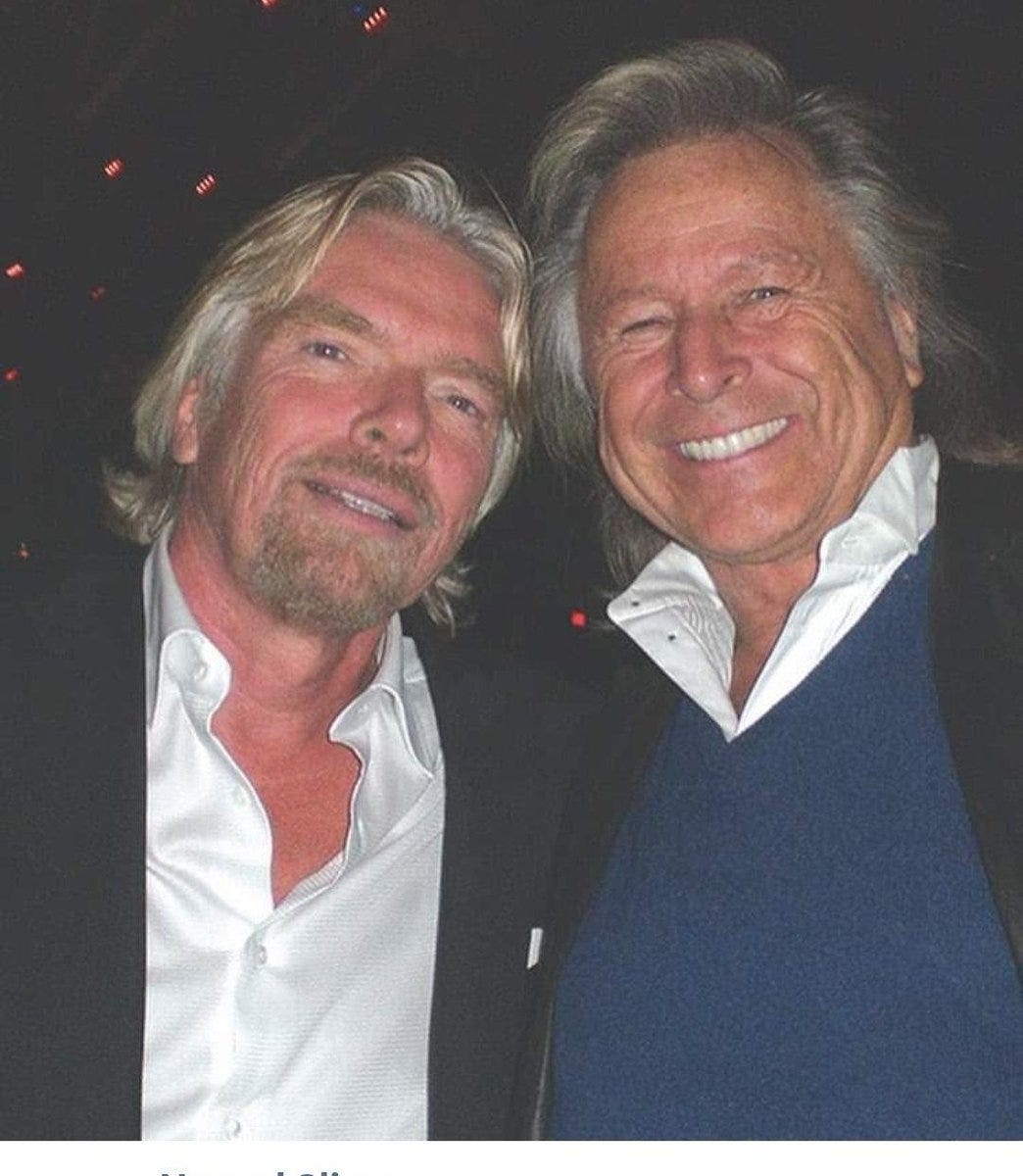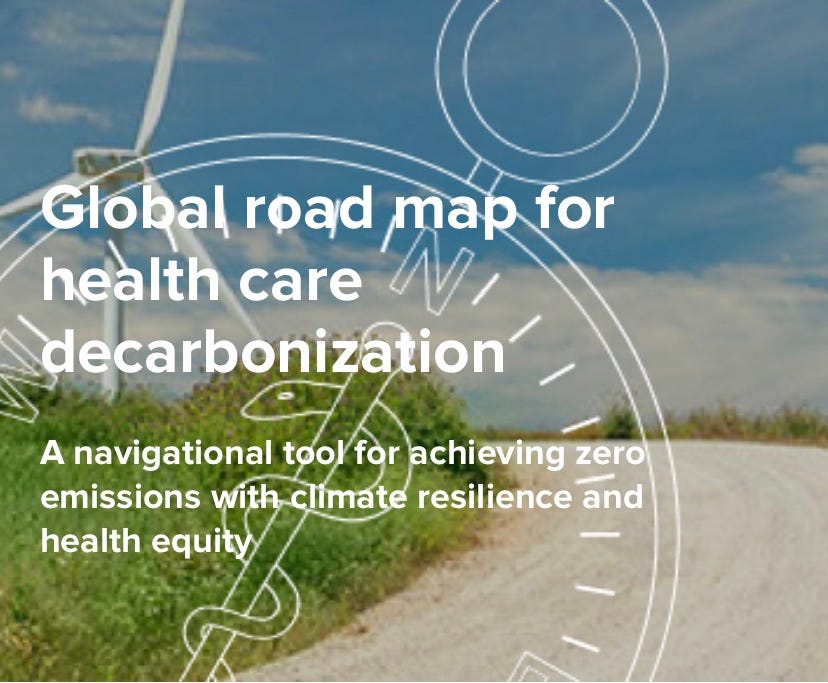ONE HEALTH & ECOHEALTH FOR HELL ON EART & BURN BACK BETTER
SCIENTIFIC CLEANSING FOR THE MUTANT POWER TO X
Please Watch bevor you Judge !
Let me first position my self to make it clear that my heart feels green and beats red for justice and blue for peace on earth. But the concept I am now present to you has really nothing to do with a healthy and natural future at all.
After studying this kind of stuff I can imagine wat ecofascism really mean’s and how it works.
At last the whole freakshow of the last years in politics, activism and the media all made sense.
HANDS Off MOTHER EARTH!
Enough is enough! The people of power are totally out of control. This is an act of terror and attack too much! Planned and executed by governments, philanthropists and the industrial military complex against one’s own population, animals and nature.
It’s time for justice to hold them accountable!
BURN BACK BETTER
Have you ever see a burning tree from inside out?
Burn Back Better: How Western States Can Encourage Prescribed Fire on Private Landsprovides an analysis of western state policies and focused recommendations to help increase private lands prescribed fire. Released in January 2023, the report is a collaboration between the Property and Environment Research Center (PERC), the national leader in creating market solutions for conservation, and Tall Timbers.
If you really love and respect the world than you have to stand up and fight against this destructive energy behind the scenes!
This is real guys and it’s disgusting!
massive plasma fire and social media blackout in Maui
https://julimination.wordpress.com/2023/09/12/maui-and-the-lack-of-humanity-update/
https://julimination.wordpress.com/2024/01/04/maui-and-the-lack-of-humanity-update-2/
https://rumble.com/v1i5k79-directed-energy-weapons-are-being-used-to-cause-strange-wildfires.html
Massachusetts School of Law Professors talks about the horrific US military plan to own and control the weather by 2025
ALL THESE “WILDFIRES” SHOULD BE INVESTIGATED.
20.08.2023 OUTRAGED HUMAN
http://www.itsuandi.org/itsui/downloads/Itsui_Materials/ForestFireAsAMilitaryWeapon.pdf
Weather is crucial for success in forest burning.
Maximum fire intensity is achieved by spacing ignitions so that adjacent fires begin to interact with each other at the exact time that each fire has reached its maximum normal intensity. Proper use of this area ignition technique can greatly increase the effectiveness of forest fire as a military weapon.
https://www.sciencedaily.com/releases/2023/08/230814122514.htm Nanoscale material offers new way to control fire — ScienceDaily
High-temperature flames are used to create a wide variety of materials — but once you start a fire, it can be difficult to control how the flame interacts with the material you are trying to process. Researchers have now developed a technique that utilizes a molecule-thin protective layer to control how the flame’s heat interacts with the material — taming the fire and allowing users to finely tune the characteristics of the processed material.
„Fire is a valuable engineering tool — after all, a blast furnace is only an intense fire,“ says Martin Thuo, corresponding author of a paper on the work and a professor of materials science and engineering at North Carolina State University. „However, once you start a fire, you often have little control over how it behaves.
„Our technique, which we call inverse thermal degradation (ITD), employs a nanoscale thin film over a targeted material. The thin film changes in response to the heat of the fire, and regulates the amount of oxygen that can access the material.
That means we can control the rate at which the material heats up — which, in turn, influences the chemical reactions taking place within the material.
Basically, we can fine-tune how and where the fire changes the material.“
https://phys.org/news/2013-08-explosive-nanotechnology-highly-reactive-nanoenergetic.html
American scientists have reported in the journal Angewandte Chemie a new aerosol spray drying method for the generation of periodate nanoparticles that can be used in the formulation of highly reactive explosives.
In formulations with nanoaluminum as fuel, this new nanoperiodate demonstrated superior reactivity.
„Our formulations resulted in the highest gas pressure pulses described to date for nanoenergetic materials,“ reports Zachariah.
https://www.benthamopen.com/contents/pdf/TOCPJ/TOCPJ-2-7.pdf
Active Thermitic Material Discovered in Dust from the 9/11 World Trade Center Catastrophe
World Trade Center Catastrophe
CONCLUSIONS
We have discovered distinctive red/gray chips in significant numbers in dust associated with the World Trade Center destruction. We have applied SEM/XEDS and other methods to characterize the small-scale structure and chemical signature of these chips, especially of their red component. The red material is most interesting and has the following characteristics:
1. It is composed of aluminum, iron, oxygen, silicon and carbon. Lesser amounts of other potentially reactive elements are sometimes present, such as potassium, sulfur, lead, barium and copper.
2. The primary elements (Al, Fe, O, Si, C) are typically all present in particles at the scale of tens to hundreds of nanometers, and detailed XEDS mapping shows intimate mixing.
3. On treatment with methyl ethyl ketone solvent, some segregation of components occurred. Elemental aluminum became sufficiently concentrated to be clearly identified in the pre-ignition material.
4. Iron oxide appears in faceted grains roughly 100 nm across whereas the aluminum appears in thin platelike structures. The small size of the iron oxide particles qualifies the material to be characterized as nano thermite or super-thermite.
5. Analysis shows that iron and oxygen are present in a ratio consistent with Fe2O3. The red material in all four WTC dust samples was similar in this way. Iron oxide was found in the pre-ignition material whereas elemental iron was not. 6. From the presence of elemental aluminum and iron oxide in the red material, we conclude that it contains the ingredients of thermite.
7. As measured using DSC, the material ignites and reacts vigorously at a temperature of approximately 430 ˚C, with a rather narrow exotherm, matching fairly closely an independent observation on a known super-thermite sample. The low temperature of ignition and the presence of iron oxide grains less than 120 nm show that the material is not conventional thermite (which ignites at temperatures above 900 ˚C) but very likely a form of super-thermite.
8. After igniting several red/gray chips in a DSC run to 700 ˚C, we found numerous iron-rich spheres and spheroids in the residue, indicating that a very high temperature reaction had occurred, since the iron-rich product clearly must have been molten to form these shapes. In several spheres, elemental iron was verified since the iron content significantly exceeded the oxygen content. We conclude that a high-temperature reduction-oxidation reaction has occurred in the heated chips, namely, the thermite reaction.
9. The spheroids produced by the DSC tests and by the flame test have an XEDS signature (Al, Fe, O, Si, C) which is depleted in carbon and aluminum relative to the original red material. This chemical signature strikingly matches the chemical signature of the spheroids produced by igniting commercial thermite, and also matches the signatures of many of the microspheres found in the WTC dust [5].
10. The carbon content of the red material indicates that an organic substance is present. This would be expected for super-thermite formulations in order to produce high gas pressures upon ignition and thus make them explosive. The nature of the organic material in these chips merits further exploration. We note that it is likely also an energetic material, in that the total energy release sometimes observed in DSC tests exceeds the theoretical maximum energy of the classic thermite reaction.
Based on these observations, we conclude that the red layer of the red/gray chips we have discovered in the WTC dust is active, unreacted thermitic material, incorporating nanotechnology, and is a highly energetic pyrotechnic or explosive material.
https://www.pnas.org/doi/10.1073/pnas.1605941113 Magnetite pollution nanoparticles in the human brain | PNAS
They arise as combustion-derived, iron-rich particles, often associated with other transition metal particles, which condense and/or oxidize upon airborne release. Those magnetite pollutant particles which are <∼200 nm in diameter can enter the brain directly via the olfactory bulb. Their presence proves that externally sourced iron-bearing nanoparticles, rather than their soluble compounds, can be transported directly into the brain, where they may pose hazard to human health.
SUMMARY OF THE INVENTION
A method is disclosed for reducing atmospheric warming due to the greenhouse effect resulting from a greenhouse gases layer. The method comprises the step of seeding the greenhouse gas layer with a quantity of tiny particles of materials characterized by wavelength dependent emissivity or reflectivity, in that said materi als have high emissivities in the visible and far infrared wavelength regions and low emissivity in the near infra red wavelength region. Such materials can include the class of materials known as Welsbach materials.
The oxides of metal, e.g., aluminum oxide, are also suitable for the purpose.
A desired material for the stratospheric seeding has a reflection coefficient close to unity for near IR radia tion, and a reflection coefficient close to zero (or emis sity close to unity) for far IR radiation. FIG. 3 is a graph illustrating an ideal emissivity versus wavelength func tion for the desired material. Another class of materials having the desired property includes the oxides of met als. For example, aluminum oxide (Al2O3) is one metal oxide suitable for the purpose and which is relatively inexpensive.
3. The method of claim 1 wherein said material comprises aluminum oxide.
https://www.ncbi.nlm.nih.gov/pmc/articles/PMC7071840/ Aluminium toxicosis: a review of toxic actions and effects – PMC (nih.gov)
https://patents.google.com/patent/US7645326B2/en RFID environmental manipulation
Abstract
A system and method to reduce signal to noise ratio within an RFID enabled warehouse or distribution center by introducing highly reflective aluminum oxide particulate into the atmospheric environment of the warehouse or distribution center. The aluminum oxide will be comprised of nano size particulate manufactured in an aerosol format. This particulate will be introduced into the environment through the auspices of the heating, ventilation and air conditioning mechanism associated with the environment.
https://patents.google.com/patent/US20100127224A1/en Atmospheric injection of reflective aerosol for mitigating global warming
Abstract
A method is provided for mitigating global warming. In such method, fine particles can be injected or dispersed into the stratosphere. The particles can be characterized by relatively low emissivity in the visible spectrum and relatively high emissivity at thermal infrared wavelengths.
In a embodiment, the fine particles can consist predominantly of silica. In a particular embodiment, the fine silica particles can include diatomaceous earth (DE), which may or may not be heat treated before injection and dispersal within the stratosphere.
In one embodiment, the fine silica particles can include at least one of silica fume, fumed silica, or powdered quartz.
The fine silica particles may have an average diameter ranging between 5 nanometers and 100 microns.
https://www.concentra.com/resource-center/articles/what-is-silica-and-why-is-it-dangerous/
What is the danger of crystalline silica exposure?
Crystalline silica has been classified as a human lung carcinogen, and can cause serious lung disease and lung cancer. It only takes a very small amount of respirable silica dust to create a health hazard.
One of the dangerous effects of silica exposure is a disease called silicosis, which can be contracted after just a few months of high exposure. Silicosis occurs when silica dust enters the lungs and causes the formation of scar tissue, reducing the lungs’ ability to take in oxygen. There is no cure for silicosis, and cases can be disabling or even fatal.
Symptoms of silicosis may include:
Cough
Fatigue
Shortness of breath
Chest pain
There is no known cure for silicosis and some patients may require a lung transplant.
Workers exposed to silica and those who have silicosis are also at increased risk of tuberculosis (TB), a contagious and potentially life-threatening infection.
Exposure to respirable crystalline silica puts workers at risk for developing other serious diseases including:
Wildfires in Syria Used as a Weapon of War
Wildfires broke out on July 25 in Latakia province in northwest Syria and are still burning amid new fires being started. The fires spread quickly by a sudden unusual wind which whipped up. The whole country, and the adjacent Mediterranean region, is in a heat-wave which sets the stage for such a devastating fire burning crops, forests and homes. However, this was not a chance wildfire, but was an act of terrorism.
General Jalal Dawoud, Head of the Fire Department in Latakia, says the fire was man-made. This was determined because the origin of the fire was not in one place, but was started in scattered areas all at the same time in daylight hours. After the security forces began their investigation, it was found that the fires were started by drones originating from Idlib, under the occupation of Hayat Tahrir al-Sham, formerly Jibhat al-Nusra, the Al Qaeda affiliate in Syria. Turkey is illegally occupying Idlib as they protect the terrorists under the command of Mohammed Jolani…
…The terrorists have been attacking the fire fighters and vehicles. Bassem Bakar, a water tanker driver, was killed when the terrorists targeted his vehicle near Deir Hanna and Rabiah. Two other men with him were injured.
Turkey is well known for the manufacture of drones. [As are the US and Israel.]https://www.globalresearch.ca/wildfires-syria-used-weapon-war/5827316
CIA WEATHER MODIFICATION
Request under the Freedom Of Information Act (FOIA)
https://www.cia.gov/readingroom/search/site/WEATHER%20MODIFICATION
https://www.cia.gov/readingroom/document/cia-rdp68r00530a000200110020-2
Document Type: CREST
Collection: General CIA Records
Document Number (FOIA) /ESDN (CREST):
CIA-RDP68R00530A000200110020-2
Release Decision: RIPPUB
Original Classification: S
Document Page Count: 18
Document Creation Date: December 14, 2016
Document Release Date: December 3, 2002
Sequence Number: 20
Publication Date: October 7, 1965
Content Type: MEMO
AttachmentSize CIA-RDP68R00530A000200110020-2.pdf973.08 KB
TRUST THE DICTATED SCIENCE!
Trust is the new holy research and science!
It made total sense that freedom of speech and expression are under pressure and attacked by corporates States, AI and social Scoring Systems. All over the world restriction and power gaps rolled out in the background of crisis to implement and rebuild our society.
How will You Otherwise handle this massive scale on Genozids and Ecozids and the stolen money ? So if you had leaders that are so corrupted and dump together you need a overnatural intelligence to protect your self from the public.
In the Name of Climate Change
https://julimination.wordpress.com/2024/01/05/the-climate-changers-and-water-wars/
The greatest evil of mankind – the Hybris of Eugenics – Paved the way for the quantifiable value of life and death build up and outplayed by Philanthropists, technocrats, wall-street wolves, war mongers, banking bulls together with corrupted politicans, scientists, doctors and academics. These people never stopped after the Nuremberg Code and Trails. Instead they immigrated as „the good Germand“ to america, Canda, Argentina and also were put in place in Germans as the head of BND by the CIA (Gellen).
„Project Paperclip“ redirects here. For the Holocaust project, see Paper Clips Project. For other uses, see Paper clip (disambiguation).
Not to be confused with Operation Paper, a 1951–52 CIA operation.
received.
In February 1938, five years after Adolf Hitler and the Nazi Party came to power, the German conservationist Wilhelm Lienenkämper published an essay on “the protection of nature from a Nazi perspective.” Three years earlier, the Nazi government had passed a national conservation law with great fanfare, and now, Lienenkämper thought, the time was ripe for a preliminary summary of the results. He was full of praise for the law itself and celebrated it as an achievement for the ages. For him, the conservation law was not an accidental by-product of Nazi rule but a direct expression of the “new Weltanschauung.” Whereas the protection of nature had formerly been something “that one can choose to do or not,” National Socialism now bestowed on it a new sense of urgency. As Lienenkämper enthusiastically proclaimed:
The Green and the Brown A History of Conservation in Nazi Germany , pp. 1 – 16
DOI: https://doi.org/10.1017/CBO9780511617485.002[Opens in a new window]
Publisher: Cambridge University Press
Print publication year: 2006
https://www.environmentandsociety.org/mml/green-and-brown-history-conservation-nazi-germany
State of Fear – Why Politicized Science is Dangerous
By Michael Crichton Excerpted from State of Fear
Imagine that there is a new scientific theory that warns of an impending crisis, and points to a way out.
This theory quickly draws support from leading scientists, politicians and celebrities around the world. Research is funded by distinguished philanthropies, and carried out at prestigious universities. The crisis is reported frequently in the media. The science is taught in college and high school classrooms.
I don’t mean global warming. I’m talking about another theory, which rose to prominence a century ago.
Its supporters included Theodore Roosevelt, Woodrow Wilson, and Winston Churchill. It was approved by Supreme Court justices Oliver Wendell Holmes and Louis Brandeis, who ruled in its favor. The famous names who supported it included Alexander Graham Bell, inventor of the telephone; activist Margaret Sanger; botanist Luther Burbank; Leland Stanford, founder of Stanford University; the novelist H. G. Wells; the playwright George Bernard Shaw; and hundreds of others. Nobel Prize winners gave support. Research was backed by the Carnegie and Rockefeller Foundations. The Cold Springs Harbor Institute was built to carry out this research, but important work was also done at Harvard, Yale, Princeton, Stanford and Johns Hopkins. Legislation to address the crisis was passed in states from New York to California.
These efforts had the support of the National Academy of Sciences, the American Medical Association, and the National Research Council. It was said that if Jesus were alive, he would have supported this effort.
All in all, the research, legislation and molding of public opinion surrounding the theory went on for almost half a century. Those who opposed the theory were shouted down and called reactionary, blind to reality, or just plain ignorant. But in hindsight, what is surprising is that so few people objected.
Today, we know that this famous theory that gained so much support was actually pseudoscience. The crisis it claimed was nonexistent. And the actions taken in the name of theory were morally and criminally wrong. Ultimately, they led to the deaths of millions of people.
The theory was eugenics, and its history is so dreadful — and, to those who were caught up in it, so embarrassing — that it is now rarely discussed. But it is a story that should be well know to every citizen, so that its horrors are not repeated.
The theory of eugenics postulated a crisis of the gene pool leading to the deterioration of the human race. The best human beings were not breeding as rapidly as the inferior ones — the foreigners, immigrants, Jews, degenerates, the unfit, and the “feeble minded.” Francis Galton, a respected British scientist, first speculated about this area, but his ideas were taken far beyond anything he intended. They were adopted by science-minded Americans, as well as those who had no interest in science but who were worried about the immigration of inferior races early in the twentieth century — “dangerous human pests” who represented “the rising tide of imbeciles” and who were polluting the best of the human race.
The eugenicists and the immigrationists joined forces to put a stop to this. The plan was to identify individuals who were feeble-minded — Jews were agreed to be largely feeble-minded, but so were many foreigners, as well as blacks — and stop them from breeding by isolation in institutions or by sterilization.
As Margaret Sanger said, “Fostering the good-for-nothing at the expense of the good is an extreme cruelty … there is not greater curse to posterity than that of bequeathing them an increasing population of imbeciles.” She spoke of the burden of caring for “this dead weight of human waste.”
Such views were widely shared. H.G. Wells spoke against “ill-trained swarms of inferior citizens.” Theodore Roosevelt said that “Society has no business to permit degenerates to reproduce their kind.” Luther Burbank” “Stop permitting criminals and weaklings to reproduce.” George Bernard Shaw said that only eugenics could save mankind.
There was overt racism in this movement, exemplified by texts such as “The Rising Tide of Color Against White World Supremacy” by American author Lothrop Stoddard. But, at the time, racism was considered an unremarkable aspect of the effort to attain a marvelous goal — the improvement of humankind in the future. It was this avant-garde notion that attracted the most liberal and progressive minds of a generation. California was one of twenty-nine American states to pass laws allowing sterilization, but it proved the most-forward-looking and enthusiastic — more sterilizations were carried out in California than anywhere else in America.
Eugenics research was funded by the Carnegie Foundation, and later by the Rockefeller Foundation. The latter was so enthusiastic that even after the center of the eugenics effort moved to Germany, and involved the gassing of individuals from mental institutions, the Rockefeller Foundation continued to finance German researchers at a very high level. (The foundation was quiet about it, but they were still funding research in 1939, only months before the onset of World War II.)
Since the 1920s, American eugenicists had been jealous because the Germans had taken leadership of the movement away from them. The Germans were admirably progressive. They set up ordinary-looking houses where “mental defectives” were brought and interviewed one at a time, before being led into a back room, which was, in fact, a gas chamber. There, they were gassed with carbon monoxide, and their bodies disposed of in a crematorium located on the property.
Eventually, this program was expanded into a vast network of concentration camps located near railroad lines, enabling the efficient transport and of killing ten million undesirables.
After World War II, nobody was a eugenicist, and nobody had ever been a eugenicist. Biographers of the celebrated and the powerful did not dwell on the attractions of this philosophy to their subjects, and sometimes did not mention it at all. Eugenics ceased to be a subject for college classrooms, although some argue that its ideas continue to have currency in disguised form.
But in retrospect, three points stand out. First, despite the construction of Cold Springs Harbor Laboratory, despite the efforts of universities and the pleadings of lawyers, there was no scientific basis for eugenics. In fact, nobody at that time knew what a gene really was. The movement was able to proceed because it employed vague terms never rigorously defined. “Feeble-mindedness” could mean anything from poverty to illiteracy to epilepsy. Similarly, there was no clear definition of “degenerate” or “unfit.”
Second, the eugenics movement was really a social program masquerading as a scientific one. What drove it was concern about immigration and racism and undesirable people moving into one’s neighborhood or country. Once again, vague terminology helped conceal what was really going on.
Third, and most distressing, the scientific establishment in both the United States and Germany did not mount any sustained protest. Quite the contrary. In Germany scientists quickly fell into line with the program. Modern German researchers have gone back to review Nazi documents from the 1930s. They expected to find directives telling scientists what research should be done. But none were necessary. In the words of Ute Deichman, “Scientists, including those who were not members of the [Nazi] party, helped to get funding for their work through their modified behavior and direct cooperation with the state.” Deichman speaks of the “active role of scientists themselves in regard to Nazi race policy … where [research] was aimed at confirming the racial doctrine … no external pressure can be documented.” German scientists adjusted their research interests to the new policies. And those few who did not adjust disappeared.
A second example of politicized science is quite different in character, but it exemplifies the hazard of government ideology controlling the work of science, and of uncritical media promoting false concepts. Trofim Denisovich Lysenko was a self-promoting peasant who, it was said, “solved the problem of fertilizing the fields without fertilizers and minerals.” In 1928 he claimed to have invented a procedure called vernalization, by which seeds were moistened and chilled to enhance the later growth of crops.
Lysenko’s methods never faced a rigorous test, but his claim that his treated seeds passed on their characteristics to the next generation represented a revival of Lamarckian ideas at a time when the rest of the world was embracing Mendelian genetics. Josef Stalin was drawn to Lamarckian ideas, which implied a future unbounded by hereditary constraints; he also wanted improved agricultural production. Lysenko promised both, and became the darling of a Soviet media that was on the lookout for stories about clever peasants who had developed revolutionary procedures.
Lysenko was portrayed as a genius, and he milked his celebrity for all it was worth. He was especially skillful at denouncing this opponents. He used questionnaires from farmers to prove that vernalization increased crop yields, and thus avoided any direct tests. Carried on a wave of state-sponsored enthusiasm, his rise was rapid. By 1937, he was a member of the Supreme Soviet.
By then, Lysenko and his theories dominated Russian biology. The result was famines that killed millions, and purges that sent hundreds of dissenting Soviet scientists to the gulags or the firing squads. Lysenko was aggressive in attacking genetics, which was finally banned as “bourgeois pseudoscience” in 1948. There was never any basis for Lysenko’s ideas, yet he controlled Soviet research for thirty years. Lysenkoism ended in the 1960s, but Russian biology still has not entirely recovered from that era.
Now we are engaged in a great new theory that once again has drawn the support of politicians, scientists, and celebrities around the world. Once again, the theory is promoted by major foundations. Once again, the research is carried out at prestigious universities. Once again, legislation is passed and social programs are urged in its name. Once again, critics are few and harshly dealt with.
Once again, the measures being urged have little basis in fact or science. Once again, groups with other agendas are hiding behind a movement that appears high-minded. Once again, claims of moral superiority are used to justify extreme actions. Once again, the fact that some people are hurt is shrugged off because an abstract cause is said to be greater than any human consequences. Once again, vague terms like sustainability and generational justice — terms that have no agreed definition — are employed in the service of a new crisis.
I am not arguing that global warming is the same as eugenics. But the similarities are not superficial. And I do claim that open and frank discussion of the data, and of the issues, is being suppressed. Leading scientific journals have taken strong editorial positions of the side of global warming, which, I argue, they have no business doing. Under the circumstances, any scientist who has doubts understands clearly that they will be wise to mute their expression.
One proof of this suppression is the fact that so many of the outspoken critics of global warming are retired professors. These individuals are not longer seeking grants, and no longer have to face colleagues whose grant applications and career advancement may be jeopardized by their criticisms.
In science, the old men are usually wrong. But in politics, the old men are wise, counsel caution, and in the end are often right.
The past history of human belief is a cautionary tale. We have killed thousands of our fellow human beings because we believed they had signed a contract with the devil, and had become witches. We still kill more than a thousand people each year for witchcraft. In my view, there is only one hope for humankind to emerge from what Carl Sagan called “the demon-haunted world” of our past. That hope is science.
But as Alston Chase put it, “when the search for truth is confused with political advocacy, the pursuit of knowledge is reduced to the quest for power.”
That is the danger we now face. And this is why the intermixing of science and politics is a bad combination, with a bad history. We must remember the history, and be certain that what we present to the world as knowledge is disinterested and honest.
Back to our Spotlight on State of Fear
Actually, the past should have taught us that the power of a state that always intervenes in the decision-making and self-determination of people is nothing more than totalitarianism or tyranny is therefore a dictatorship with a few in power that appropriates everything for Zero and with prohibited and censorship distorts the reality that they pretend to manage for the benefit of the people.
“No one intends to build a wall.”
One Earth, One Family and One Future & One Digital Public Infrastructure
Today I present you the amazing work of
G20 leaders meeting uncovers the new old technocratic concepts
At the G20 leaders‘ meeting in India, under the motto “One Earth, One Family, One Future”, the new concept Digital Public Infrastructure (DPI) and the NGO One Future Alliance were launched. These initiatives intend to increase the interconnectedness of the data-based systems with the aim of meeting the Sustainable Development Goals
Why the President of the Club of Rome tried to stop the approval of my dissertation
A brief history of the club, their vision of a technocratic dictatorship, and tight connections to the elites of the world
I was in Rome in the middle of September to meet with my family and celebrate one of my sisters who turned 60. She had dreamt of having her birthday party in Rome. The trip also gave me the possibility to explore the city’s rich history and visit some well known places.
One of those places were Academia dei Lincei. A prestigious scientific institution, claimed to be the oldest in the world, that is located in the Palazzo Corsini in the Trastevere district. As a strange coincidence we found out that the botanical garden of Rome, a place that my other sister, a florist, had expressed her wishes to visit, was located in the garden of the same palace. I also learned that this was the place where Queen Christina of Sweden set up her “Academy of Arcadia” after her abdication from the Swedish throne in 1654.1 After her death in 1689, the Pontifical Academy of Arcadia was established in her memory.
My main reason to visit the institution was that it was the birthplace of the elitist environmental think tank Club of Rome. An organisation that has had a huge influence on the global agenda. In this case we also find Swedish connections.
On April 7-8, 1968, 30 European economists and scientists gathered in the nearby Villa Farnesina to discuss a framework for initiating systems-wide planning on a global scale. At this meeting they couldn’t agree on what should be done, but a little core group was created in the aftermath to carry on with the agenda. This group took the nameClub of Rome and began preaching the gospel of doom.
Club of Rome’s mission has since been “to promote understanding of the global challenges facing humanity and to propose solutions through scientific analysis, communication and advocacy”.
When I started my studies in Geography in 2004, I genuinely believed in their doomsday messages and dire projections, but as I climbed higher on my learning ladder I began to question the validity of their claims.
It was due to the warnings of a dramatic drop in oil production in the years after the millennium shift that I had returned to the university to learn more about energy. I was worried about what would happen if the world’s oil supply would run out and Club of Rome was one of the main proponents of the Peak Oil Theory. But as they also claimed that the burning of fossil fuels would cause catastrophic climate change, I started doubting the narrative. Wouldn’t this problem be solved if there was no oil to be burned? How could they sound the alarm on both issues? And what was their solution?
I sensed that there were “something rotten in the state of Denmark”. As I was writing my Masters thesis in Geography in 2007, I became aware of the disturbing connections to the elites of the world and the real goals of the club.
The seed money to establish Club of Rome came from Italy’s richest man at the time. The head of the automobile manufacturer FIAT, Gianni Agnelli.
The founders were the Italian industrialist Aurelio Peccei, formerly FIAT, Olivetti and AlItalia, and British scientist Alexander King, Director-General for Scientific Affairs at OECD. They were both connected to NATO.
The background was that Peccei had held the keynote speech at the banking organisation ADELA’s first meeting at Buenos Aires National Military College in 1965.
ADELA (Atlantic Development of Latin America) was an international consortium of bankers with the aim of supporting industrialisation and economic integration in order to achieve a common Latin American market. Peccei was one of the founders together with David Rockefeller’sclose alley, US Senator Jacob Javits. Other notable participants were Emilio Collado(Standard Oil of New Jersey), Warren Wilhelm (Texaco Oil), Gianni Agnelli and the Swedish banker Marcus WallenbergSr.2
Peccei talked about the future technological revolution, artificial intelligence and “the close interdependence between man and the machine” that would change everything. He advocated that this development had to be centrally guided and that it required unification of Europe and later the world. Otherwise the control of the future would be lost.3, 3.1
His speech caught the attention of US Secretary of State Dean Rusk (previously the president of The Rockefeller Foundation) as well as Jermen Gvishianifrom the State Committee on Science and Technology of the Soviet Union. This started a chain of events that led to the meeting in Rome three years later.
The ball really started rolling after a meeting at Rockefeller Foundations Bellagio Center in Italy in October 1968 with several of the Clubs members attending and other participants joining. The meeting was a joint OECD and Rockefeller Foundation venture that produced the outcome document „The Bellagio Declaration on Planning“.
Aurelio Peccei outlined his philosophy in the book The Chasm Ahead in March 1969. The ideas had similarities to Columbia Professor Zbigniew BrzezinskisTechnetronic Society that were presented in the book Between Two Ages in 1970.
The prescribed solution was a Technocratic Dictatorship for Crisis Management that was to be sold to the public with nice fuzzy words about saving the earth and preserving wildlife. Peccei’s environmental rhetoric had been inspired by his hero Julian Huxley, the founder of WWF and UNESCO.
With aid from international philanthropy and support from US and Soviet governments, Club of Rome then became an international venture, with participants from both sides of the Iron Curtain with offshoots like International Institute for Applied Systems Analysis (IIASA), located in the castle Schloss Laxenburg, Austria (1972), and International Federation of Institutes for Advanced Study (IFIAS), initially located at Ulriksdal Castle in Stockholm (1972).
I later learned that the originator of the Peak Oil Theory, M King Hubbert, was a member of Club of Rome. Hubbert was an enthusiastic technocrat that had co-founded Technocracy Inc. in 1933 together with Howard Scott. Hubbert was the main author of the manual to technocracy, Technocracy Study Course, which principles were taught in the basement of Colombia University, New York. These technocratic ideas of system wide planning and scientific management techniques were incorporated into the Club of Rome’s philosophy.
As chief geologist at Shell Oil, Hubbert had projected that US oil production would peak in 1970. This prediction was presented at the American Petroleum Institute in 1956. His theory – which was falsified when United States oil production surpassed the 1970 peak in 2018 – was then used to further Club of Rome’s technocratic vision for the world.
This was also the case with the Anthropogenic Global Warming (AGW) theory. Probably the biggest scientific fraud of all ages. Former Rockefeller Panel Report member Carrol L. Wilson (a close friend of Nelson Rockefeller’s) incorporated “man made climate change” in Club of Rome’s agenda in the early seventies and commissioned MIT and Jay Forrester to make suitable data projections about the future.
These projections were included in Club of Rome’s most well-known report Limits to Growth (1972), which was published with big fanfares three months before United Nations Conference on the Environment and Development in Stockholm, sparking a debate on the link between population growth and resource scarcity. Fittingly, Club of Rome member and Rockefeller Foundation member Maurice Strong was secretary-general of the conference, with Wilson as his advisor.
Global management of the planet and zero growth were prescribed as the grand solutions. These solutions have since been repeated over and over in reports to the Club of Rome such as Mankind at the Turning Point (1974), Reshaping the International Order (1976), Goals for Mankind(1977), The First Global Revolution(1991), Bankrupting Nature (2011), and the latest, Earth for All (2022).
Aurelio Peccei presented this plan to Klaus Schwab and the global business elite at Schwab’s newly founded European Management Forum in 1973. That same year David Rockefeller and Zbigniew Brzezinski founded the Trilateral Commission with the same goal in mind. https://widgets.weforum.org/history/1973.html
The plan was also discussed by futurists and global planners during World Future Society’sconference “The Next 25 Years: Crisis & Opportunity” in 1975, with US Vice President Nelson Rockefeller as the opening speaker. It was called for a crisis that would have the ability to unite humanity and achieve the desired outcome.6
In 1978, a meeting was held at Grand Hotel in Saltsjöbaden, Sweden, with heads of state and government to discuss how the problems highlighted by Club of Rome could be solved.
At this meeting, the main obstacles to the fulfillment Club of Rome’s utopian vision were identified as a) democracy; b) labour unions; and c) the striving of individuals to create a better lives for themselves. Therefore, both persuasion and fear would have to be used.
As ministers, we have received a great deal of information, forecasts and the results of analysis. What is lacking is political decision. Most politicians are aware of the nature of the problems, but no decisions are taken. Why? The man in the street is not prepared to make sacrifices and the politician will not fight this attitude—indeed he cannot without risking his political life. Sacrifice is against trade union principles.
There are two possible approaches: One is to try to build up an ethic which substitutes satisfaction for material reward. The other is to frighten people to the point where they will make sacrifices in order to avoid catastrophe. Both methods must be attempted.
(from Dr. Whitehead’s notes from the Club of Rome meeting in Saltsjöbaden, Stockholm, 1978)
In 1980, World Future Society arranged the “First Global Conference on the Future” with the motto “Think Globally, Act Locally” with Strong and Peccei as attendees. The futurist Warren Wagar proclaimed that technocracy was “the highest stage of capitalism” and prophesied that it soon would be implemented.
Three years later, Trilateral Commission member Gro Harlem Brundtland headed the UN commission, together with Maurice Strong, which developed the concept of Sustainable Development. It was presented in their report Our Common Future (1987) and was the trojan horse that would make the technocratic dictatorship a reality.
In 1991 the Trilateral Commission presented an action plan on how to achieve this in Beyond Interdependence – The Meshing of the worlds Economy and the Earths ecology. Maurice Strong and David Rockefeller wrote the foreword.
Strong then took the role as secretary-general during the Earth Summit in Rio de Janeiro in 1992. The major outcomes was the adoption of UN Agenda 21 and the UN Framework Convention for Climate Change (UNFCCC). The plan was put in place.
Strong also headed the Earth Charter commission together with honorary Club of Rome-member Mikhail Gorbachev, and with Steven Rockefeller as coordinator. The outcome was sixteen principles, or commandments, for a “just, sustainable and peaceful world”. They were launched at the Peace Palace in the Hague in 2000.
Scenarios on how the desired “planetary civilisation” could be achieved were presented in the Global Scenario Groups The Great Transition – The Promises and Lures of Our Times in 2002. This report listed crisis like environmental degradation, climate change, social polarisation, and terrorism as possible triggers for the transformation.
The main author, Paul Raskin, had been a member of the Earth Charter Commission and is currently a member of the Club of Rome.Funding came from Rockefeller Foundation and UNEP.
World Economic Forum became the main vehicle to realise their vision, in tandem with the United Nations. This was manifested through the merging of UNs Agenda 21/Agenda 2030 and WEFs The Fourth Industrial Revolution, with the signing of a partnership in June 2019.
Club of Rome is now one of the leading advocates for a declaration of a “Planetary Emergency “by the UN General Assembly during the Summit of the Future in 2024.12 This could trigger the set up of an Emergency Platform to establish the envisioned Technocratic Dictatorship. “Für ihrer sicherheit.”
Factsheet – The IMF and the Sustainable Development Goals https://www.imf.org/en/About/Factsheets/Sheets/2016/08/01/16/46/Sustainable-Development-Goals
We must innovate out of COVID to reach the 2030 global goals | World Economic Forum https://www.weforum.org/agenda/2021/03/harness-pace-of-innovation-during-pandemic-to-meet-sdgs/
World Bank Group and The 2030 Agenda https://www.worldbank.org/en/programs/sdgs-2030-agenda
WEF, the United Nations and SDGs https://www.wef.org/advocacy/global-programs/wef-the-united-nations-and-sdgs/
The genes of all living things on Earth—including the sunflower, a valuable oil crop— consist of varying sequences of four chemical compounds: adenine, thymine, cytosine, and guanine, abbreviated as A, T, C, and G. By identifying genes and manipulating them, scientists hope to create new crops that will help us face the challenges of global warming and population growth.
The Next Green Revolution
BY TIM FOLGER
Modern supercrops will be a big help.
But agriculture can’t be fixed by biotech alone.Something is killing Ramadhani Juma’s cassava crop. “Maybe it’s too much water,” he says, fingering clusters of withered yellow leaves on a six-foot-high plant. “Or too much sun.” Juma works a small plot, barely more than an acre, near the town of Bagamoyo, on the Indian Ocean about 40 miles north of Dar es Salaam, Tanzania. On a rainy March morning, trailed by two of his four young sons, he’s talking with a technician from the big city, 28-year-old Deogratius Mark of the Mikocheni Agricultural Research Institute. Mark tells Juma his problem is neither sun nor rain. The real cassava killers, far too small to see, are viruses.
Answering that question will be one of the greatest challenges of this century. Climate change and population growth will make life increasingly precarious for Juma, Kagembe, and other small farmers in the developing world—and for the people they feed. For most of the 20th century humanity managed to stay ahead in the Malthusian race between population growth and food supply. Will we be able to maintain that lead in the 21st century, or will a global catastrophe beset us?
The United Nations forecasts that by 2050 the world’s population will grow by more than two billion people. Half will be born in sub-Saharan Africa, and another 30 percent in South and Southeast Asia. Those regions are also where the effects of climate change—drought, heat waves, extreme weather generally—are expected to hit hardest. Last March the Intergovernmental Panel on Climate Change warned that the world’s food supply is already jeopardized. “In the last 20 years, particularly for rice, wheat, and corn, there has been a slowdown in the growth rate of crop yields,” says Michael Oppenheimer, a climate scientist at Princeton and one of the authors of the IPCC report. “In some areas yields have stopped growing entirely. My personal view is that the breakdown of food systems is the biggest threat of climate change.”
Half a century ago disaster loomed just as ominously. Speaking about global hunger at a meeting of the Ford Foundation in 1959, one economist said, “At best the world outlook for the decades ahead is grave; at worst it is frightening.” Nine years later Paul Ehrlich’s best seller, The Population Bomb,predicted that famines, especially in India, would kill hundreds of millions in the 1970s and 1980s.
Before those grim visions could come to pass, the green revolution transformed global agriculture, especially wheat and rice. Through selective breeding, Norman Borlaug, an American biologist, created a dwarf variety of wheat that put most of its energy into edible kernels rather than long, inedible stems. The result: more grain per acre. Similar work at the International Rice Research Institute (IRRI) in the Philippines dramatically improved the productivity of the grain that feeds nearly half the world.
From the 1960s through the 1990s, yields of rice and wheat in Asia doubled. Even as the continent’s population increased by 60 percent, grain prices fell, the average Asian consumed nearly a third more calories, and the poverty rate was cut in half. When Borlaug won the Nobel Peace Prize in 1970, the citation read, “More than any other person of this age, he helped provide bread for a hungry world.”
To keep doing that between now and 2050, we’ll need another green revolution. There are two competing visions of how it will happen. One is high-tech, with a heavy emphasis on continuing Borlaug’s work of breeding better crops, but with modern genetic techniques. “The next green revolution will supercharge the tools of the old one,” says Robert Fraley, chief technology officer at Monsanto and a winner of the prestigious World Food Prize in 2013. Scientists, he argues, can now identify and manipulate a huge variety of plant genes, for traits like disease resistance and drought tolerance. That’s going to make farming more productive and resilient.
The signature technology of this approach—and the one that has brought both success and controversy to Monsanto—is genetically modified, or GM, crops. First released in the 1990s, they’ve been adopted by 28 countries and planted on 11 percent of the world’s arable land, including half the cropland in the U.S. About 90 percent of the corn, cotton, and soybeans grown in the U.S. are genetically modified. Americans have been eating GM products for nearly two decades. But in Europe and much of Africa, debates over the safety and environmental effects of GM crops have largely blocked their use.
Proponents like Fraley say such crops have prevented billions of dollars in losses in the U.S. alone and have actually benefited the environment. A recent study by the U.S. Department of Agriculture found that pesticide use on corn crops has dropped 90 percent since the introduction of Bt corn, which contains genes from the bacterium Bacillus thuringiensis that help it ward off corn borers and other pests. Reports from China indicate that harmful aphids have decreased—and ladybugs and other beneficial insects have increased—in provinces where GM cotton has been planted.
The cassava plants in this petri dish have been genetically engineered to resist brown streak virus, a disease that’s spreading across sub-Saharan Africa, where cassava is a staple for 250 million people. Field tests began last spring in Uganda. Only four African countries allow the planting of genetically modified crops.
https://www.nationalgeographic.com/foodfeatures/green-revolution/
This is nothing but another way to keep the masses poor and grab the land for zero? Please think about that and than think about the people and corporations behind the agenda and what it has in common…
WASHINGTON, DC (October 10, 2006) — UN Secretary-General Kofi Annan announced tonight that the United Nations Foundation has delivered $1 billion of new and additional resources to the United Nations and UN causes. The milestone was marked at the annual United Nations Association-USA dinner – the same occasion at which, nine years ago, Ted Turner made his unprecedented pledge to donate $1 billion to UN causes and to raise additional funds through partnership efforts. The Foundation also announced that it intends to use the remaining $400 million of Turner’s gift to leverage another $1 billion in support of UN causes over the coming years.
The Foundation (and its sister organization, the Better World Fund) has donated over $600 million from founder Ted Turner and over $400 million from individuals, corporations, governments, and NGOs to programs that address key global challenges in four areas: children’s health, environment, women and population, and peace, security and human rights. The United Nations Fund for International Partnerships (UNFIP) facilitates the Foundation’s work within the UN system.
In prepared remarks, Annan said: “Ted’s gift was a tremendous financial boost for our organization. More than that, it has helped the UN to change – to become a partnership organization, something that has been a top priority of mine. … But Ted’s act was perhaps most important for the message it sent to his fellow Americans, his fellow businessmen and women, and to the world. Here was an iconic businessman standing up for the United Nations, and saying to the world that the UN and its work were worthy of support.”
Turner, chairman of the UN Foundation’s Board of Directors, said: “As we are seeing all across the globe, the UN works – for the world’s poor, for peace, for progress and for human rights and justice. That’s why I’ve always believed in the UN. That’s why I’ve always supported the UN. And that’s why I set up the UN Foundation.”
“In fact,” Turner added, “One the great legacies of Kofi Annan’s tenure at the UN has been his embrace of the private sector and civil society – his efforts to transform the United Nations into a partnership organization. Kofi Annan recognizes that interdependence is the driving force of our time. He knows that in an interconnected global economy, we all have a stake – moral and material – in peace and security. Together with the Secretary-General, the Foundation’s leadership, and our diverse and international board, this organization has worked tirelessly to campaign for solutions to the world’s greatest challenges. It is one of the best investments I’ve ever made.”
Timothy E. Wirth, President of the UN Foundation, said: “Nearly ten years ago, no one knew what this experiment in global philanthropy could do or how involved Ted would be. In fact, he has donated generously not only of his money, but his time. Few realize that Ted also announced that he would lead comprehensive efforts to get others involved in the UN’s work – and the results show that he has succeeded here as well. With his support and his commitment to the UN, we’ve been able to put together partnerships that include some of the world’s largest companies and leading charities including the American Red Cross, Coca-Cola, Expedia, Global Fund, Nike, Rotary International, and Vodafone. Without him, none of this would have been possible and we’re looking forward to working with him and the UN to deliver the next billion to UN causes.”
About the United Nations Foundation
The UN Foundation was created in 1998 with entrepreneur and philanthropist Ted Turner’s historic $1 billion gift to support UN causes and activities. The UN Foundation builds and implements public-private partnerships to address the world’s most pressing problems, and also works to broaden support for the UN through advocacy and public outreach. The UN Foundation is a public charity. For a complete listing of UN Foundation grants and programs or to learn more about the United Nations Foundation, visithttp://www.unfoundation.org
Board of Directors
Ted Turner, Chairman (USA)
Founder, CNN, and Chairman, Turner Enterprises, Inc.
Timothy E. Wirth, President (USA) Former Senator and Undersecretary of State for Global Affairs
Her Majesty Queen Rania Al-Abdullah (Jordan)
Chairperson, Jordan River Foundation
Dr. Gro Harlem Brundtland (Norway)
Former Prime Minister of Norway, and Director-General Emeritus, WHO
Dr. Ruth Cardoso (Brazil) President, Comunidade Solidaria
Liang Dan (China) Director of Investment and Technology, Promotion Branch, UNIDO
Graca Machel (Mozambique) Chair, Foundation for Community Development, former First Lady of Mozambique
N.R. Narayana Murthy (India) Chief Mentor, Infosys
His Excellency Mr. Hisashi Owada (Japan) Judge, International Court of Justice
Emma Rothschild (UK) Director, Centre for History and Economics, King’s College, University of Cambridge
Nafis Sadik (Pakistan) Special Advisor to the UN Secretary-General, former Executive Director of UNFPA
Ambassador Andrew Young (USA) Chairman, Good Works International
Muhammad Yunus (Bangladesh) Founder and Managing Director, Grameen Bank
Watch: https://archive.org/details/rosakoire.unagenda2030exposed.hd
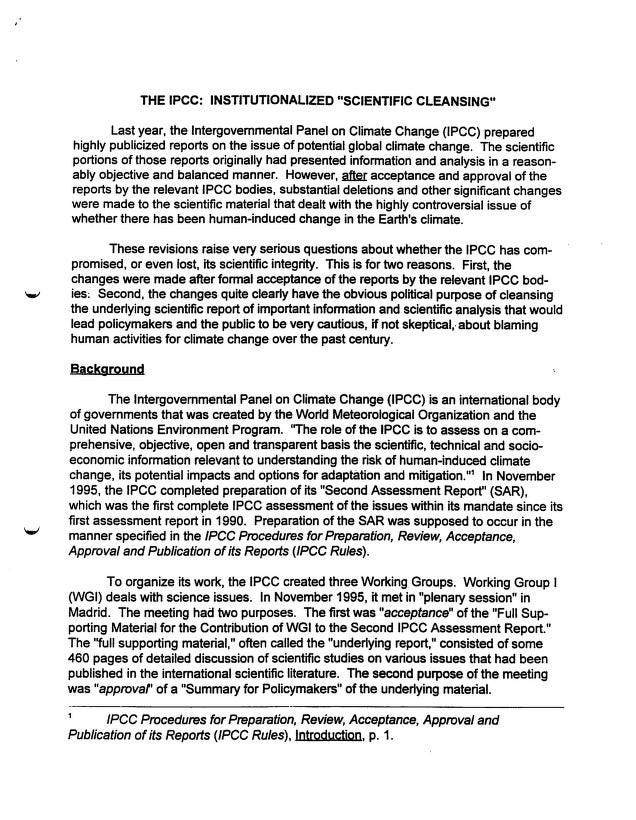
Changing requisites to universities in the 21st century: organizing for transformative sustainability science for systemic change
https://www.sciencedirect.com/science/article/abs/pii/S1877343515000950?via%3Dihub
Advocacy by Combining One Health and Ecohealth
Combining One Health and Ecohealth groups would bring together the supporters of each. Given that One Health and Ecohealth groups each have limited support, this could be a significant step towards greater advocacy power, attracting more followers, funding and policy influence. The upcoming joint One Health Ecohealth Congress, which will facilitate dialogue between the advocates of each group, is an ideal opportunity for this. Combining them may also be valuable in managing competition and rivalry between the two groups.
Conclusion
In conclusion, further convergence of One Health and Ecohealth should bring a number of advantages: improved understanding and management of health issues, reciprocal adoption of good practices, economic gains and greater advocacy power. However, we recognise that union is unlikely at the moment due to conceptually narrow practices, reluctance to abandon the banners of ‘One Health’ and ‘Ecohealth’, cultural differences between the groups and difficulty in engaging the medical profession. The continued separation of One Health and Ecohealth but with closer cooperation and joint processes where there would be advantages is a preferable and realistic direction for the foreseeable future, but we believe that unity will eventually be the best path forward for both groups.
https://julimination.wordpress.com/2024/01/20/never-again-is-now/?preview=true
Nygard was taken into custody in Canada.
Copy link
Those that scream the loudest
Every. Single. Time
Sickos
You
Biden-Harris_Management_Agenda_Vision_11-18
This is the legally binding International obligation to genetically modify every living being on earth.
The genetically mutated creatures or organism’s that arise in laboratory experiments are then recorded, patented and traded by means of the gene sequence!!! In order to protect nature, we will synthesize everything natural and call the Eugenics-mutant-freakshow – biodiversity… and declare it as the one and only final solution – for climate change!?
How dare you Greta and Mutant-Greens ?
CARTAGENA PROTOCOL
ON BIOSAFETY TO THE CONVENTION ON BIOLOGICAL DIVERSITY
The Convention on Biological Diversity was finalized in Nairobi in May 1992 and opened for signature at the United Nations Conference on Environment and Development (UNCED) in Rio de Janeiro on 5 June 1992. It entered into force on 29 December 1993. Today, the Convention is the main international instrument for addressing biodiversity issues. It provides a comprehensive and holistic approach to the conservation of biological diversity, the sustainable use of natural resources and the fair and equitable sharing of benefits deriving from the use of genetic resources.
Article
1 OBJECTIVEIn accordance with the precautionary approach contained in Principle 15 of the Rio Declaration on Environment and Development, the objective of this Protocol is to contribute to ensuring an adequate level of protection in the field of the safe transfer, handling and use of living modified organisms resulting from modern biotechnology that may have adverse effects on the conservation and sustainable use of biological diversity, taking also into account risks to human health, and specifically focusing on transboundary movements.
The shining green future is nuclear active
green revolution
UK /ˌɡriːn rev.əˈluː.ʃən/ US /ˈɡriːn rev.əˌluː.ʃən/
a large increase in food production because of better farming technology, especially the one that happened around the world in the middle of the 20th century:
The green revolution created opportunities for millions of people to have access to rice and other grains.
The Green Revolution brought technological innovations that reduced the labour required for agriculture, whilst increasing yields.
Fewer examples
The institute played a big role in the first green revolution.
The Green Revolution of the 1960s - when high-yielding strains were developed that boosted food supply - also negatively affected soil quality and water tables.
Green revolution technologies of the 1960s and 1970s led to the emergence of a rice-wheat cropping system in the region.
important changes, especially in technology and in the ways that resourcesare used, that reduce damage to the environment:
They spoke of the need to move away from fossil fuels, and claimed to want to lead a new greenrevolution.
He called for a Green Revolution.
There will be winners and losers in both camps. During the transition the world will continue to guzzle hydrocarbons. The International Energy Agency
Nagoya & Cartagena Protocol & Provital
Safeguarding Biodiversity and Ethical Bio-Commerce
Biodiversity Webinar on the preparation for the first meeting of the Ad Hoc Open-ended Working Group on Benefit-sharing from the Use of Digital Sequence Information on Genetic Resources.
The legally binding International obligation to genetically modify every living being on earth.
The genetically mutated creatures or organism’s that arise in laboratory experiments are then recorded, patented and traded by means of the gene sequence!!! In order to protect nature, we will synthesize everything natural and call the Eugenics-mutant-freakshow – biodiversity… and declare it as the one and only final solution – for climate change!?How dare you Greta and Mutant-Greens ?
The Convention on Biological Diversity was finalized in Nairobi in May 1992 and opened for signature at the United Nations Conference on Environment and Development (UNCED) in Rio de Janeiro on 5 June 1992. It entered into force on 29 December 1993. Today, the Convention is the main international instrument for addressing biodiversity issues. It provides a comprehensive and holistic approach to the conservation of biological diversity, the sustainable use of natural resources and the fair and equitable sharing of benefits deriving from the use of genetic resources.
Article
1 OBJECTIVEIn accordance with the precautionary approach contained in Principle 15 of the Rio Declaration on Environment and Development, the objective of this Protocol is to contribute to ensuring an adequate level of protection in the field of the safe transfer, handling and use of living modified organisms resulting from modern biotechnology that may have adverse effects on the conservation and sustainable use of biological diversity, taking also into account risks to human health, and specifically focusing on transboundary movements.
Nagoya Protocol & Provital
Here I have to make a small break and make a little switch to the shock doctrine and disaster capitalism because it is the basis for everything we are currently experiencing…
Despite the rampaging success of the Chicago Boys, Mr. Bush’s desire to turn Iraq into a strip mall has run up against intractable opposition, forcing him to scale back many of his more ambitious schemes. “Bush’s in-house disaster capitalists didn’t wipe Iraq clean,” “they just stirred it up.” And there’s encouraging news from Latin America, the birthplace of Friedman’s experiment, where democracies likes Brazil, Uruguay and Venezuela are opting out of the I.M.F. and turning their backs on free market “reforms.” Some people, it seems, have seen so many of the Chicago Boys’ tricks that they can no longer be shocked by them.
Stephen Amidon’s most recent novel is Human Capital (Picador).
Santos, Juan (January 8, 2008). „An Essay by Juan Santos: The Face of Fascism in a Global System Heading for Collapse“. Retrieved February 21, 2017.
And its not only the “free market“ (in reality free market never exists because power Always strives for more power) that corrupted institutions and politics one of the most aggressive power house that shaped states, people and economies are the Intelligence community especially the CIA with his assets.
More Resources to this Topic
The Violence of the Green Revolution: Third World Agriculture, Ecology, and Politics on JSTOR
Rich sad man’s with poor morals and dark minds must be stoped from this worldwide genocide!
Interestingly that all the so called Green and Equality global Leaders are all pro war?!
No one with a good sense and real love for nature is in a position to do something like that !
This isn’t noble and cares about everything even it is like profitabel. This guys are the real problem and they are the biggest threat to all living beings on earth. If the military is occupying health you can be sure that this is no more health but war!
Biowarfare, bioterrorism and biocrime:
A historical overview on microbial harmful applications
Manuela Oliveira,a,b,c,⁎ Gabriella Mason-Buck,d David Ballard,d Wojciech Branicki,e and António Amorima,b,c
Author information Article notes Copyright and License information PMC Disclaimer
Go to:
Highlights
• •
Microorganisms have been use as weapons since pre-historic times.
• •
Biowarfare is the intentional use of biological agents as weapons in war scenarios.
• •
Bioterrorism is the intentional use of biological agents against a civilian population.
• •
Biocrime is the intentional use of biological agents against a specific individual.
• •
Microbial forensics can be applied to solve cases of BW, BT, and BC.
Keywords: Biocrime, Bioterrorism, Biowarfare, Genetics, Microbial forensics
With good-sounding phrases and Secretly changed definitions they lure the trap for us.
COVID-19 and World Order
Hal Brands and Francis J. Gavin
https://healthcareclimateaction.org/roadmap
https://julimination.wordpress.com/2024/06/16/the-datafaketory/
1. Allen CR, Cumming GS, Garmestani AS, Taylor PD, Walker BH. Managing for resilience. Wildlife Biology. 2011;17:337–349. doi: 10.2981/10-084. [CrossRef] [Google Scholar]
2. Atlas R. One Health: Its origins and future. In: Mackenzie JS, Jeggo M, Daszak P, Richt JA, editors. One Health: The Human-Animal-Environment Interfaces in Emerging Infectious Diseases: The Concept and Examples of a One Health Approach. Berlin: Springer; 2013. pp. 1–13. [Google Scholar]
3. Bresalier M, Cassidy A, Woods A. One Health in history. In: Zinsstag J, Schelling E, Waltner-Toews D, Whittaker M, Tanner M, editors. One Health: The Theory and Practice of Integrated Health Approaches. Wallingford: CABI; 2015. pp. 1–15. [Google Scholar]
4. Brundtland G. Our Common Future: The World Commission on Environment and Development. Oxford: Oxford University Press; 1987. [Google Scholar]
5. Charron DF. Preface. In: Charron DF, editor. Ecohealth Research in Practice: Innovative Applications of an Ecosystem Approach to Health. New York: Springer; 2012. pp. 9–12. [Google Scholar]
6. Charron DF. Ecohealth: origins and approach. In: Charron DF, editor. Ecohealth Research in Practice: Innovative Applications of an Ecosystem Approach to Health. New York: Springer; 2012. pp. 1–30. [Google Scholar]
7. Charron DF. Ecohealth research in practice. In: Charron DF, editor. Ecohealth Research in Practice: Innovative Applications of an Ecosystem Approach to Health. New York: Springer; 2012. pp. 255–271. [Google Scholar]
8. Chua KB, Chua BH, Wang CW. Anthropogenic deforestation, El Niño and the emergence of Nipah virus in Malaysia. The Malaysian Journal of Pathology. 2002;24:15–21. [PubMed] [Google Scholar]
9. Cook RA, Karesh WB, Osofsky SA (2004) About One World, One Health. New York: Wildlife Conservation Society.
http://www.oneworldonehealth.org/
. Accessed 11 July 2015
10. Costanza R, Mageau M, Norton B, Patten BC. What is sustainability? In: Rapport D, Costanza R, Epstein PR, Gaudet C, Levins R, editors. Ecosystem Health. Malden: Blackwell Science; 1998. pp. 231–239. [Google Scholar]
11. Costanza R, Mageau M, Norton B, Patten BC. Predictors of ecosystem health. In: Rapport D, Costanza R, Epstein PR, Gaudet C, Levins R, editors. ecosystem health. Malden: Blackwell Science; 1998. pp. 240–250. [Google Scholar]
12. Dakubo CY. Evolution towards an ecosystem approach to public health. In: Dakubo CY, editor. Ecosystems and Human Health: A Critical Approach to Ecohealth Research and Practice. New York: Springer; 2010. pp. 21–36. [Google Scholar]
13. Daszak P, Cunningham AA, Hyatt AD. Anthropogenic environmental change and the emergence of infectious diseases in wildlife. Acta Tropica. 2001;78:103–116. doi: 10.1016/S0001-706X(00)00179-0. [PubMed] [CrossRef] [Google Scholar]
14. Field H, Young P, Yob JM, Mills J, Hall L, Mackenzie J. The natural history of Hendra and Nipah viruses. Microbes and Infection. 2001;3:307–314. doi: 10.1016/S1286-4579(01)01384-3. [PubMed] [CrossRef] [Google Scholar]
15. Forget G, Lebel J. An ecosystem approach to human health. International Journal of Occupational and Environmental Health. 2001;7:S3–S38. [PubMed] [Google Scholar]
16. Great Lakes Research Advisory Board (1978) Ecosystem approach: scope and implications of an ecosystem approach to transboundary problems in the Great Lakes basin: special report to the International Joint Commission. http://scholar.uwindsor.ca/ijcarchive/161/. Accessed 8 January 2016
17. Joshi DD, Sharma M, Waltner-Toews D. Rebuilding urban ecosystems for better community health in Kathmandu. In: Charron DF, editor. Ecohealth Research in Practice: Innovative Applications of an Ecosystem Approach to Health. New York: Springer; 2012. pp. 191–201. [Google Scholar]
18. Kahn LH, Kaplan B, Steele JH. Confronting zoonoses through closer collaboration between medicine and veterinary medicine (as ‘One Medicine’) Veterinaria Italiana. 2007;43:5–19. [PubMed] [Google Scholar]
19. Lalonde M (1974) A new perspective on the health of Canadians, Ottawa, Canada: Canadian Federal Government. http://www.phac-aspc.gc.ca/ph-sp/pube-pubf/perintrod-eng.php. Accessed 6 January 2016
20. Odum E. Fundamentals of Ecology. 3. Philadelphia: W.B. Saunders; 1971. [Google Scholar]
21. One Health Commission (2015) Mission/Goals. https://www.onehealthcommission.org/en/why_one_health/mission__goals. Accessed 14 July 2015
22. One Health Ecohealth 2016 (2015) Welcome.
http://oheh2016.org
. Accessed 19 July 2015
23. One Health Foundation (2015) What we do. http://www.onehealthfoundation.org/htm/aboutus.htm?maincat=174. Accessed 14 July 2015
24. One Health Platform (2015) About us.
http://onehealthplatform.com/?page_id=80
. Accessed 29 July 2015
25. Parkes MW. Diversity, emergence, resilience: guides for a new generation of ecohealth research and practice. Ecohealth. 2011;8:137–139. doi: 10.1007/s10393-011-0732-8. [PubMed] [CrossRef] [Google Scholar]
26. Parkes MW, Panelli R, Weinstein P. Converging paradigms for environmental health theory and practice. Environmental Health Perspectives. 2003;111:669–675. doi: 10.1289/ehp.5332. [PMC free article] [PubMed] [CrossRef] [Google Scholar]
27. Pearce N. Traditional epidemiology, modern epidemiology, and public health. American Journal of Public Health. 1996;86(5):678–683. doi: 10.2105/AJPH.86.5.678. [PMC free article] [PubMed] [CrossRef] [Google Scholar]
28. Pulliam JR, Epstein JH, Dushoff J, Rahman SA, Bunning M, Jamaluddin AA, Hyatt AD, Field HE, Dobson AP, Daszak P. Agricultural intensification, priming for persistence and the emergence of Nipah virus: a lethal bat-borne zoonosis. Journal of the Royal Society Interface. 2012;9(66):89–101. doi: 10.1098/rsif.2011.0223. [PMC free article] [PubMed] [CrossRef] [Google Scholar]
29. Saunders LZ. Virchow’s contributions to veterinary medicine: celebrated then, forgotten now. Veterinary Pathology. 2000;37(3):199–207. doi: 10.1354/vp.37-3-199. [PubMed] [CrossRef] [Google Scholar]
30. Schelling E, Bechir M, Ahmed MA, Wyss K, Randolph TF, Zinsstag J. Human and animal vaccination delivery to remote nomadic families, Chad. Emerging Infectious Diseases. 2007;13(3):373–379. doi: 10.3201/eid130
Allenby B. R.Richards D. J. (Eds.). 1994. The greening of industrial ecosystems. Washington, DC: National Academy Press. Google Scholar
Ayres R. U. 1993. Cowboys, cornucopians, and long-run sustainability. Ecological Economics, 8: 189–207. Google Scholar
Bailey R. 1993. Eco-scam: The false prophets of ecological apocalypse. New York: St. Martin’s Press. Google Scholar
Barbier E. 1987. The concept of sustainable economic development. Environmental Conservation, 142: 101–110. Google Scholar
Beck U. 1992. Risk society: Towards a new modernity. London: Sage. Google Scholar
Beckerman W. 1994. “Sustainable development”: Is it a useful concept? Environmental Values, 33: 191–209. Google Scholar
Berreby D. 1995. Unabsolute truths: Clifford Geertz. New York Times Magazine. April 9: 44–47. Google Scholar
Bhagwati J. 1993. The case for tree trade. Scientific American. 27011: 42–49. Google Scholar
Birch C., Cobb J. B. 1981. The liberation of life. Cambridge, England: Cambridge University Press. Google Scholar
Botkin D. B. 1990. Discordant harmonies: A new ecology for the twenty-first century. New York: Oxford University Press. Google Scholar
Brown L. R, Kane H. 1994. Full house; Reassessing the earth’s population carrying capacity. New York: Norton. Google Scholar
Brown L. R., et al. 1994. State of the world: 1994. New York: Norton. Google Scholar
Buchholz R, 1993. Principles of environmental management: The greening of business. Englewood Cliffs, NJ: Prentice Hall. Google Scholar
Burrell G., Morgan G. 1979. Sociological paradigms and organizational anaiysis. Exeter, NH: Heineman. Google Scholar
Buss D. M, Craik K. H. 1983. Contemporary worldviews: Personal and policy implications. Journal of Applied Social Psychology, 13: 280–295. Google Scholar
Callicott J. B. 1989. In defense of the land ethic. Albany: State University of New York Press. Google Scholar
Calvin W. H. 1994. The emergence of intelligence. Scientific American. 2714: 101–107. Google Scholar
Cannella A. A., Paetzold R. L. 1994. Pfeffer’s barriers to the advance of organizational science: A rejoinder. Academy of Management Review, 19(2): 331–341.Abstract , Google Scholar
Capra F. 1982. The turning point: Science, society and the rising culture. New York: Bantam Books. Google Scholar
Catton W. R., Dunlap R. E. 1980. A new ecological paradigm for post-exuberant sociology. American Behavioral Scientist, 20(1): 15–47. Google Scholar
Cernea M. 1993. The sociologist’s approach to sustainable development. Finance and Development, 30(4): 6–10. Google Scholar
Chappell T. 1993. The soul of a business; Managing for profit. New York: Bantam. Google Scholar
Ciriacy-Wantrup S. V. 1963. Resource conservation: Economics and policies. Berkeley: University of California Press. Google Scholar
Clark W. C. 1989. Managing planet earth. Scientific American, 2613: 47–54. Google Scholar
Collins J. C., Porras J. I. 1994. Built to last: Successful habits of visionary companies. New York: HarperBusiness. Google Scholar
Costanza R. (Ed.). 1991. Ecological economics: The science and management of sustainability. New York: Columbia University Press. Google Scholar
Costanza R., Daly H. E. 1992. Natural capital and sustainable development. Conservation Biology, 6: 37–46. Google Scholar
Costanza R., Daly H. E., Bartholomew J. A. 1991. Goals, agenda and policy recommendations for ecological economics. In Costanza R. (Ed.), Ecological economics; The science and management of sustainability; 1–20. New York: Columbia University Press. Google Scholar
Costanza R.Norton B. G.Haskell B. D. (Eds.). 1992. Ecosystem health: New goals for environmental management. Washington, DC: Island Press. Google Scholar
The Nazi symbiosis: politics and human genetics at the Kaiser Wilhelm Institute
https://pubmed.ncbi.nlm.nih.gov/15571767/
Thomas M. Berez, Sheila Faith Weiss
https://doi.org/10.1016/j.endeavour.2004.10.004
The case of the Kaiser Wilhelm Institute for Anthropology, Human Heredity and Eugenics (KWIA), from its inception in Weimar Republic Germany to its apogee under the rule of the Third Reich, is an example of how politics and human heredity can function as mutually beneficial resources. Whether it was a result of the Nazi bureaucrats‘ desire to legitimize their racial policy through science, or the KWIA personnel’s desire to secure more funding for their research, the symbiotic relationship that developed between human genetics and Nazi politics could help explain why many scientists in the Third Reich undertook research projects that wholly transgressed the boundaries of morally acceptable science.
Section snippets
The KWIA’s pre-Nazi past: 1927–1933
The KWIA was formally opened on 15 September 1927, a day that coincided with the meeting that week of the Fifth International Genetics Conference in Berlin. The timing of the Institute’s opening was no mere coincidence; the President of the Kaiser Wilhelm Society (KWS), Adolph von Harnack, had sold the idea of the Institute to the Weimar Government by stressing the need for Germany to keep pace with the developments of the international biomedical community. However, despite the lure of
Coordination and compliance: enter the Nazis
5 July 1933 was the first time the KWIA
Institutional expansion: reaping the benefits of the relationship
Fischer utilized his newfound importance in the Reich to initiate a process of institutional expansion. In 1934, the KWIA director was able to obtain a 60% increase in governmental support from the previous year, which had risen 75% from its 1934 commitment by 1937 [13]. This generous financial backing was used by Fischer to increase the number of scientific personnel at the Institute, where most of the staff were medically trained, and also to extend the KWIA’s research orientation. For
Service to the Reich: assisting the Nazi state
By 1935, Fischer could proudly proclaim that his Institute had placed itself in the service of the Nazi state, sometimes even at the expense of ‘purely scientific tasks’ [15]. Indeed, supporting the highly extensive network of state advisory, legal, instructional and propaganda activities concerning the Nazi’s racial policy took up much of the KWIA members‘ time and effort.
Verschuer and the KWIA: 1942–1945
By early 1942, the nearly 68 year-old Fischer had enjoyed a long and successful career. After assuming leadership of the KWIA and navigating it through the potentially damaging storm that was the rise of National Socialism, the renowned anthropologist eventually became the academic spokesman for racial policy in the Third Reich. At this point, both Fischer and top Nazi officials fully realized that the relationship between the Institute and the State was mutually beneficial, and that the former
Conclusion
From its inception, the Nazi state viewed human heredity as a scientific resource that could promote and legitimize its racial policies. As such, the regime was willing to provide financial backing to institutions like the KWIA so that the fields of human heredity and genetics could be advanced in the hope that such knowledge could further serve the interest of racial policy goals. Naturally, the expectations of the Nazi government rose as the funding they provided to such institutionsRecommended articles
References (26)
O. BartovGermany’s War and the Holocaust – Disputed Histories(2003)
This assessment is based on reference material and the testimonials of non-German geneticists and other biomedical…
For a discussion of the background to the founding of the KWIA see Weindling, P. (1985) Weimar eugenics: The Kaiser…
S. VolkovAntisemitismus als kultureller Code
Weindling, P. (1989) Health, Race, and German Politics between National Unification and Nazism, 1870–1945, Cambridge…
Bergmann, A. et al. (1989) Menschen als Objekte humangenetischer Forschung und Politik im 20. Jahrhundert. Zur…
R. ProctorFrom Anthropologie to Rassenkunde in the German anthropological tradition
For a discussion of the ‘Harnack principle’, see Vieraus, R. (1996) Bemerkungen zum sogenannten Harnack-Prinzip. Mythos…
A detailed and accurate account of this denunciation campaign is given in Lösch, N.C. (1997), pp….
Bundesarchiv Berlin-Lichterfelde (BAB,
http://www.bundesarchiv.de/
) R1501…
BAB R1501…
MPG-Archiv, Abt. I Rep1A, 204 Blätter 22–26; BAB R 1501…
The sums listed above are taken from ‘Vermögensübersicht und Einnahmen-und Ausgaben Rechnung’ reports for 1933, 1934…
Cited by (3)
You can’t keep a bad idea down: Dark history, death, and potential rebirth of eugenics2022, Anatomical Record
Marriage and fatherhood in the Nazi SS2018, Marriage and Fatherhood in the Nazi SS
Eugenics. A historical analysis and a possible proposal2011, Acta Bioethica
they used the same ideas and ideology
Allenby B. R.Richards D. J. (Eds.). 1994. The greening of industrial ecosystems. Washington, DC: National Academy Press. Google Scholar
Ayres R. U. 1993. Cowboys, cornucopians, and long-run sustainability. Ecological Economics, 8: 189–207. Google Scholar
Bailey R. 1993. Eco-scam: The false prophets of ecological apocalypse. New York: St. Martin’s Press. Google Scholar
Barbier E. 1987. The concept of sustainable economic development. Environmental Conservation, 142: 101–110. Google Scholar
Beck U. 1992. Risk society: Towards a new modernity. London: Sage. Google Scholar
Beckerman W. 1994. “Sustainable development”: Is it a useful concept? Environmental Values, 33: 191–209. Google Scholar
Berreby D. 1995. Unabsolute truths: Clifford Geertz. New York Times Magazine. April 9: 44–47. Google Scholar
Bhagwati J. 1993. The case for tree trade. Scientific American. 27011: 42–49. Google Scholar
Birch C., Cobb J. B. 1981. The liberation of life. Cambridge, England: Cambridge University Press. Google Scholar
Botkin D. B. 1990. Discordant harmonies: A new ecology for the twenty-first century. New York: Oxford University Press. Google Scholar
Brown L. R, Kane H. 1994. Full house; Reassessing the earth’s population carrying capacity. New York: Norton. Google Scholar
Brown L. R., et al. 1994. State of the world: 1994. New York: Norton. Google Scholar
Buchholz R, 1993. Principles of environmental management: The greening of business. Englewood Cliffs, NJ: Prentice Hall. Google Scholar
Burrell G., Morgan G. 1979. Sociological paradigms and organizational anaiysis. Exeter, NH: Heineman. Google Scholar
Buss D. M, Craik K. H. 1983. Contemporary worldviews: Personal and policy implications. Journal of Applied Social Psychology, 13: 280–295. Google Scholar
Callicott J. B. 1989. In defense of the land ethic. Albany: State University of New York Press. Google Scholar
Calvin W. H. 1994. The emergence of intelligence. Scientific American. 2714: 101–107. Google Scholar
Cannella A. A., Paetzold R. L. 1994. Pfeffer’s barriers to the advance of organizational science: A rejoinder. Academy of Management Review, 19(2): 331–341.Abstract , Google Scholar
Capra F. 1982. The turning point: Science, society and the rising culture. New York: Bantam Books. Google Scholar
Catton W. R., Dunlap R. E. 1980. A new ecological paradigm for post-exuberant sociology. American Behavioral Scientist, 20(1): 15–47. Google Scholar
Cernea M. 1993. The sociologist’s approach to sustainable development. Finance and Development, 30(4): 6–10. Google Scholar
Chappell T. 1993. The soul of a business; Managing for profit. New York: Bantam. Google Scholar
Ciriacy-Wantrup S. V. 1963. Resource conservation: Economics and policies. Berkeley: University of California Press. Google Scholar
Clark W. C. 1989. Managing planet earth. Scientific American, 2613: 47–54. Google Scholar
Collins J. C., Porras J. I. 1994. Built to last: Successful habits of visionary companies. New York: HarperBusiness. Google Scholar
Costanza R. (Ed.). 1991. Ecological economics: The science and management of sustainability. New York: Columbia University Press. Google Scholar
Costanza R., Daly H. E. 1992. Natural capital and sustainable development. Conservation Biology, 6: 37–46. Google Scholar
Costanza R., Daly H. E., Bartholomew J. A. 1991. Goals, agenda and policy recommendations for ecological economics. In Costanza R. (Ed.), Ecological economics; The science and management of sustainability; 1–20. New York: Columbia University Press. Google Scholar
Costanza R.Norton B. G.Haskell B. D. (Eds.). 1992. Ecosystem health: New goals for environmental management. Washington, DC: Island Press. Google Scholar
JuliMination
ONE HEALTH & ECOHEALTH FOR HELL ON EARTH
←Shifting Paradigms for Sustainable Development: Implications for Management Theory and Research
